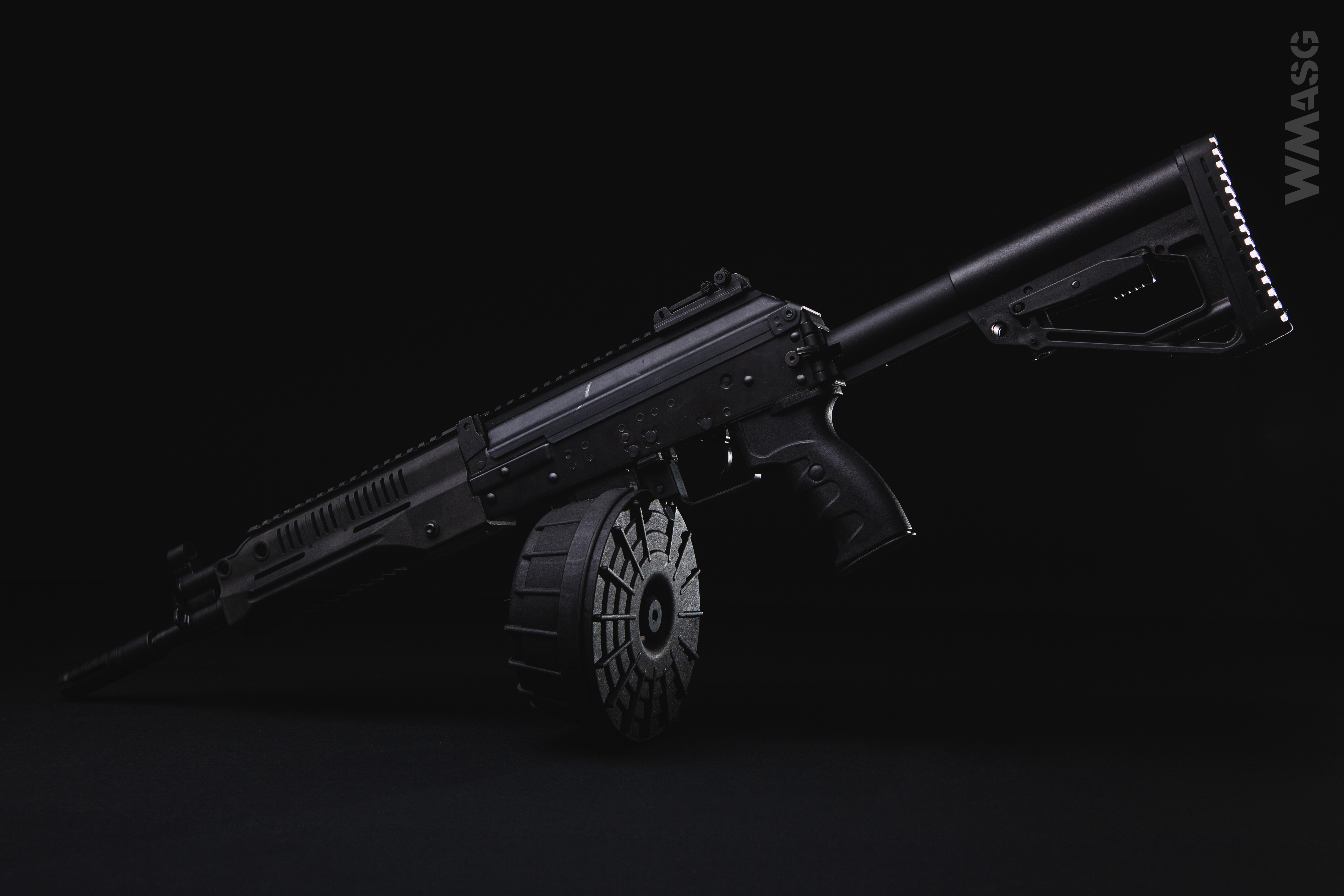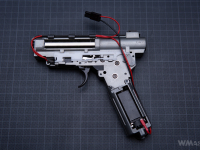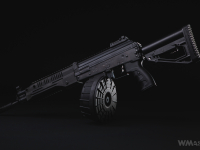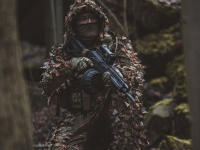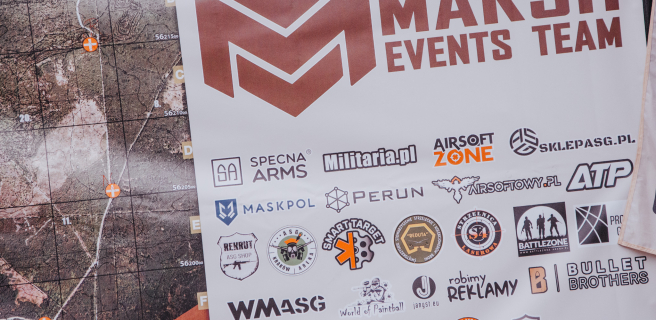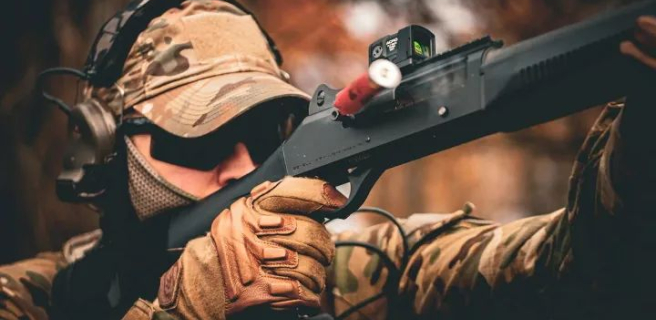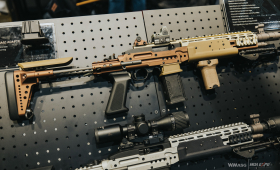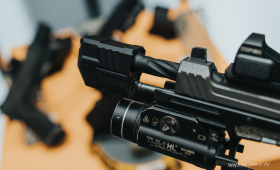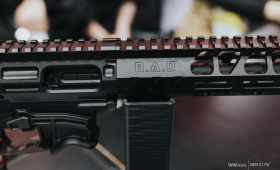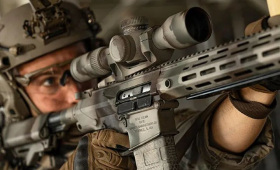The history of the RPK-16 is quite short. It was first presented to the public nearly four years ago at the Army-2016 exhibition. Interestingly, the RPK-16 project was conducted independently by the Kalashnikov Concern, regardless of the competition for a new light machine gun set at about the same time under the name Tokarz-2. In 2017, field tests were carried out, and in February 2018 a contract was signed for the supply of the first batch of RPK-16s numbering several thousand units. The first ones went into service in 2019.
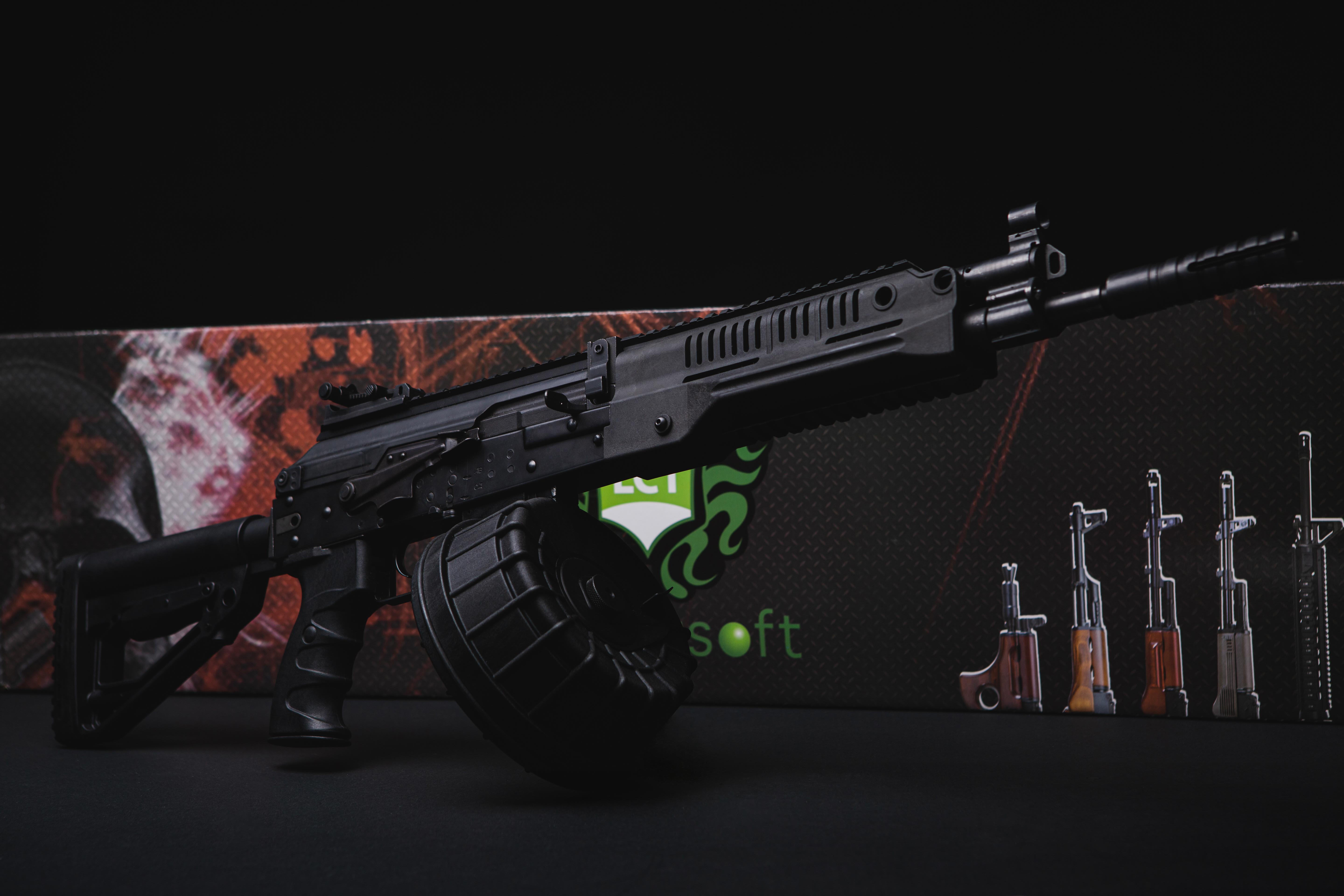
The RPK-16 is the successor to the RPK-74 and its derivatives and, like its predecessor, uses 5.45x39 mm ammunition. Its unique feature is the ability to quickly replace the barrel without specialized tools. It is produced in two lengths - with a 370 mm long barrel and a 550 mm long barrel. LCT showed the first prototype of the replica as early as September 2019, i.e. just a few months after the start of deliveries of the real firearm. In December, we saw working prototypes at the MOA exhibition in Taiwan. Today we have the opportunity to present you a finished replica.
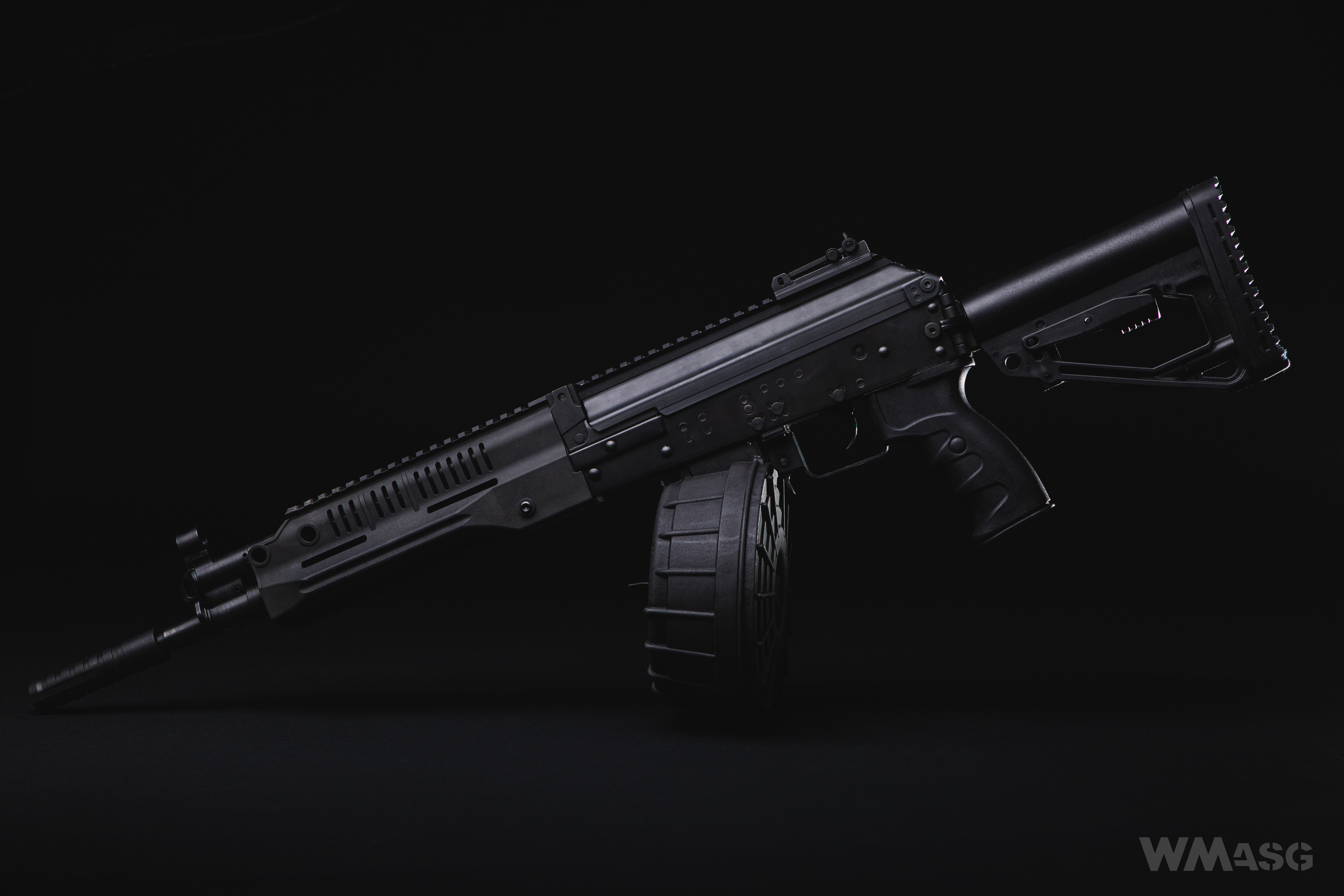
The replica
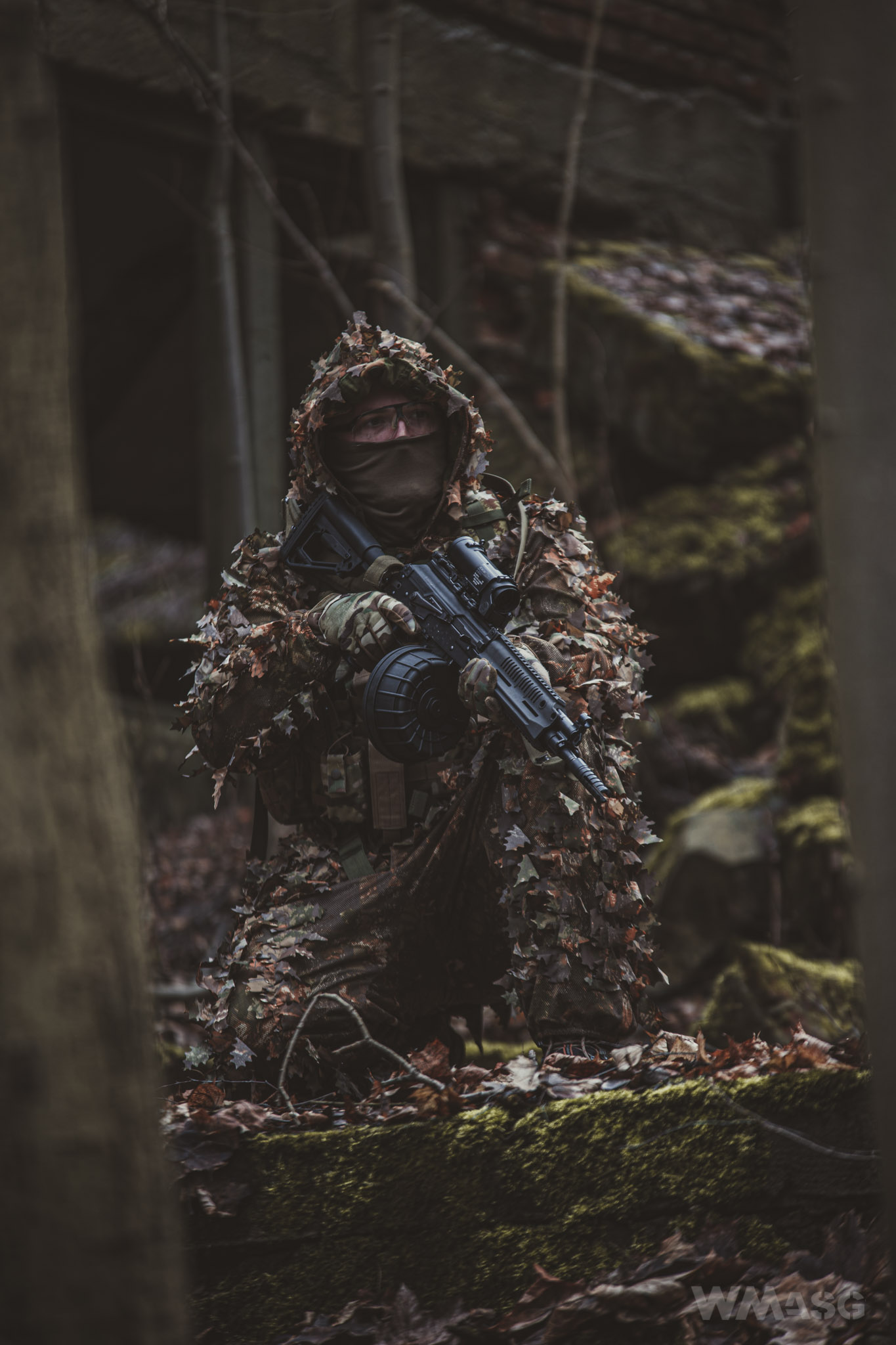
The replica is made in a standard well known for LCT users. The vast majority of the outer metal parts are made of steel and covered with oxidation, which guarantees that "it will age well". The only part made of aluminum alloy is the stock guide. The whole is fitted and assembled very well.
Currently, a shorter version of RPK-16 is available, with a 370 mm long steel outer barrel. It ends with a steel slotted flash hider.

The gas block, which is also the basis of the front sight, is also made of steel. In the front part there is a fixed dummy gas tube plug, made as a separate element. It is mounted from the side invisible to us, so one doesn't have to worry about getting it lost.
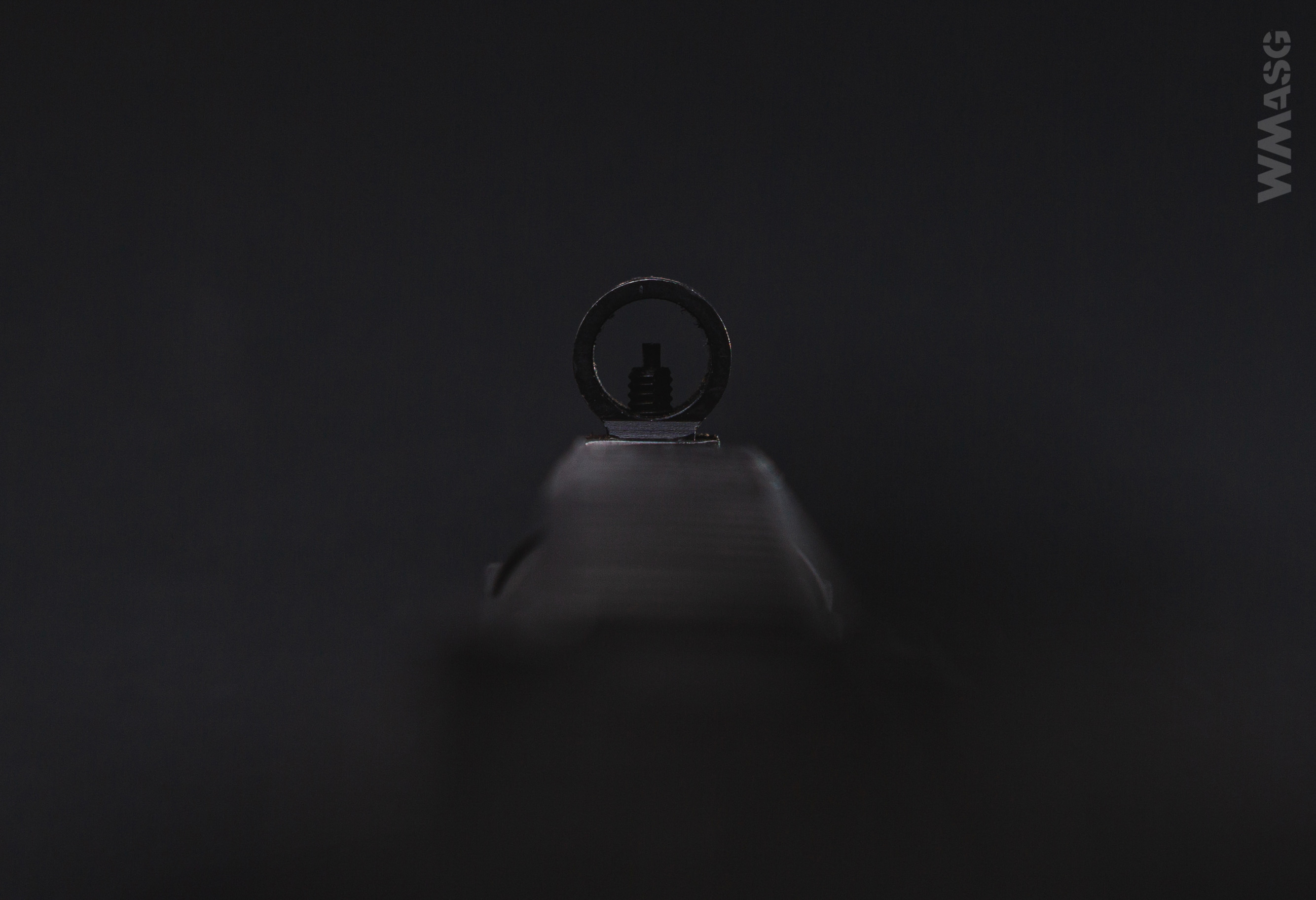
The front sight tie is adjusted vertically in a traditional way for the AK system. The gas block is mounted on the barrel with pins, but like in a flash hider, it is additionally secured with setting screws. Unfortunately, in the described gas block the screw was far too long and protruded significantly.
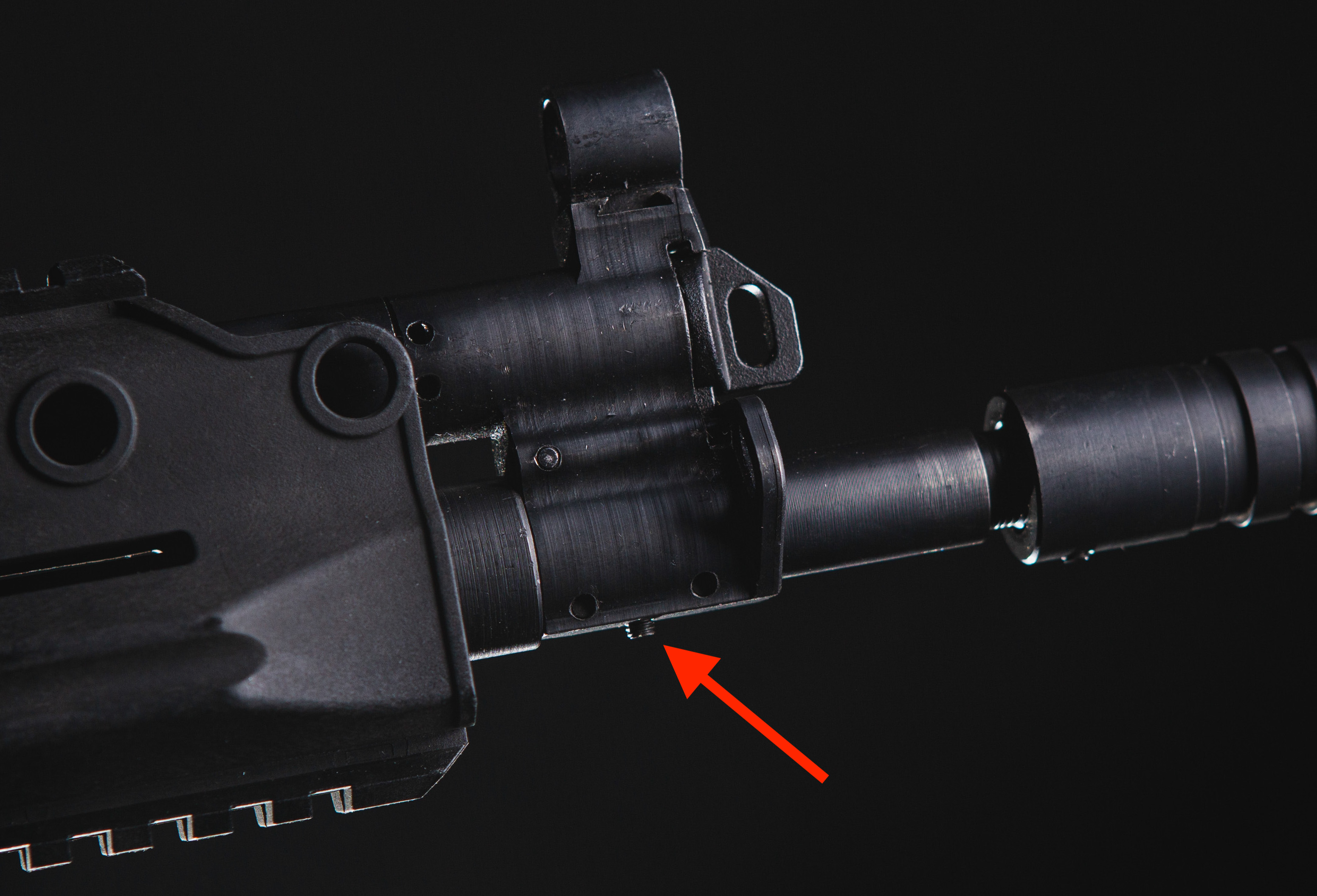
The handguard is made of hard reinforced polymer. A standard Picatinny rails run on its top and underneath it and additional rail sections can be mounted on the sides. The handguard is push-fit and additionally secured with a pin and a screw. The connection is rigid and has no slack. The characteristic round holes in the front are not QD carrying sling attachment points, but are likely to be used for mounting on the vehicle base. The screw (red arrow) visible in the photos secures the barrel.
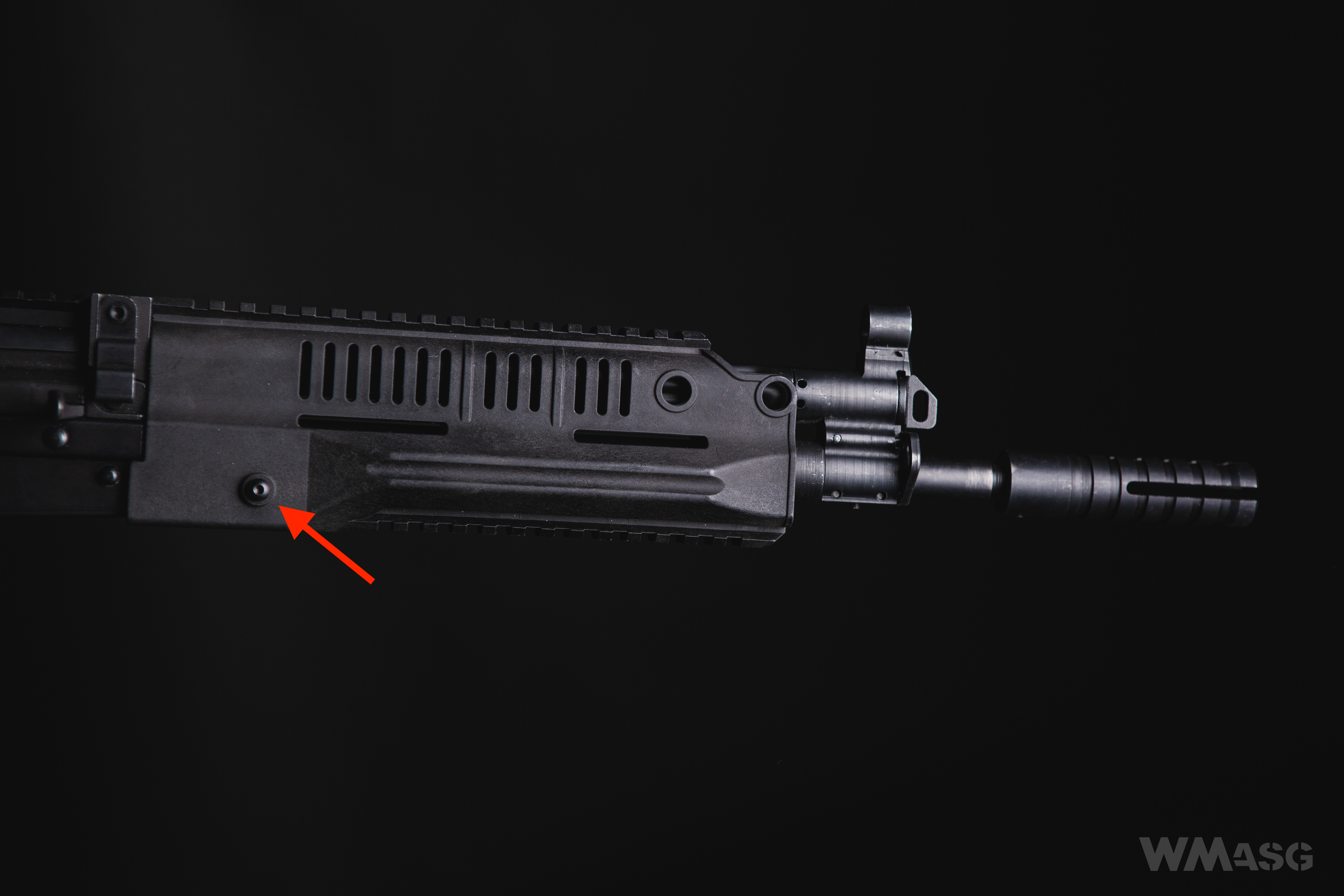
The handguard mounting screw is located at its bottom. The second element fastening the handguard is a pin passing through the side walls of the carbine receiver.
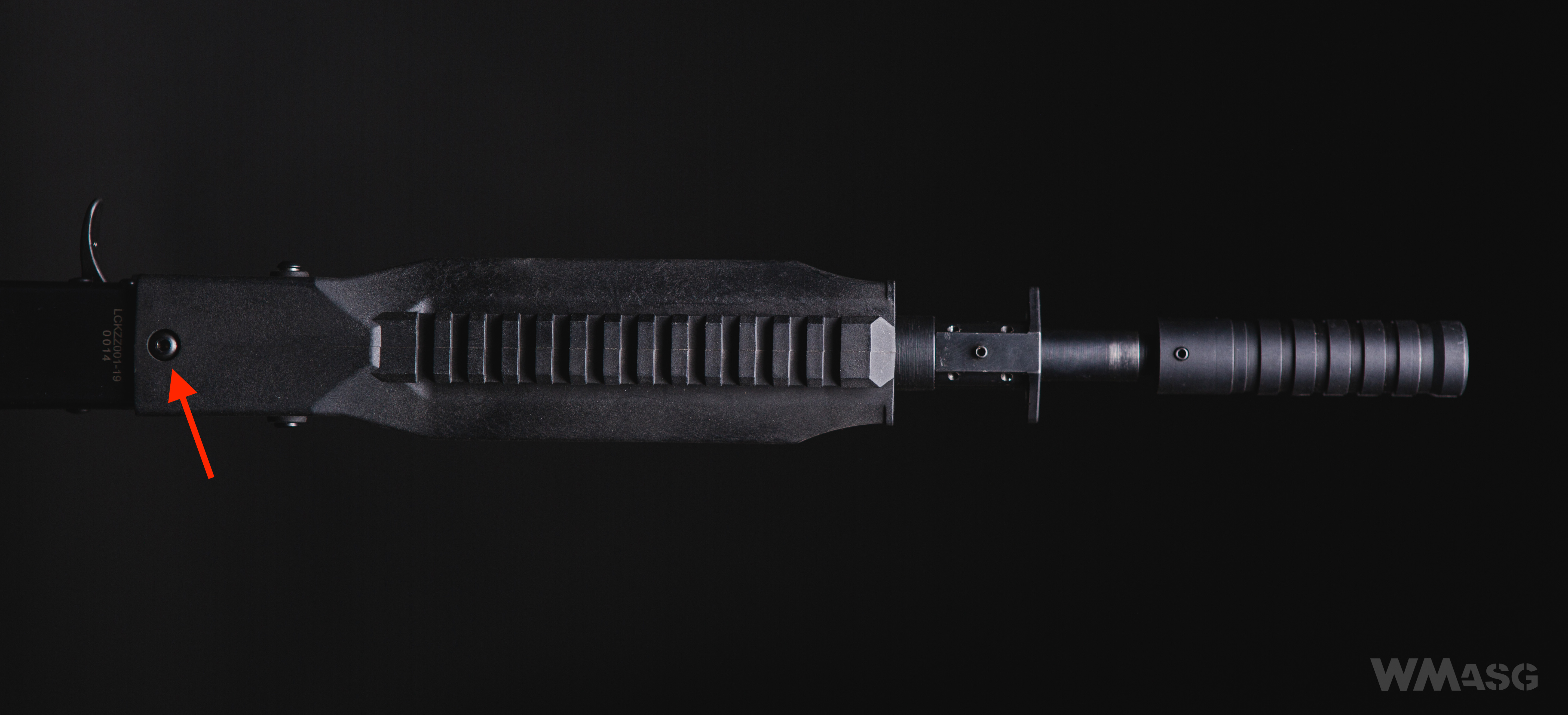
All studs and welds have been carefully reproduced on the steel receiver of the replica. In the front part there are also reinforcement, characteristic for earlier RPK models.
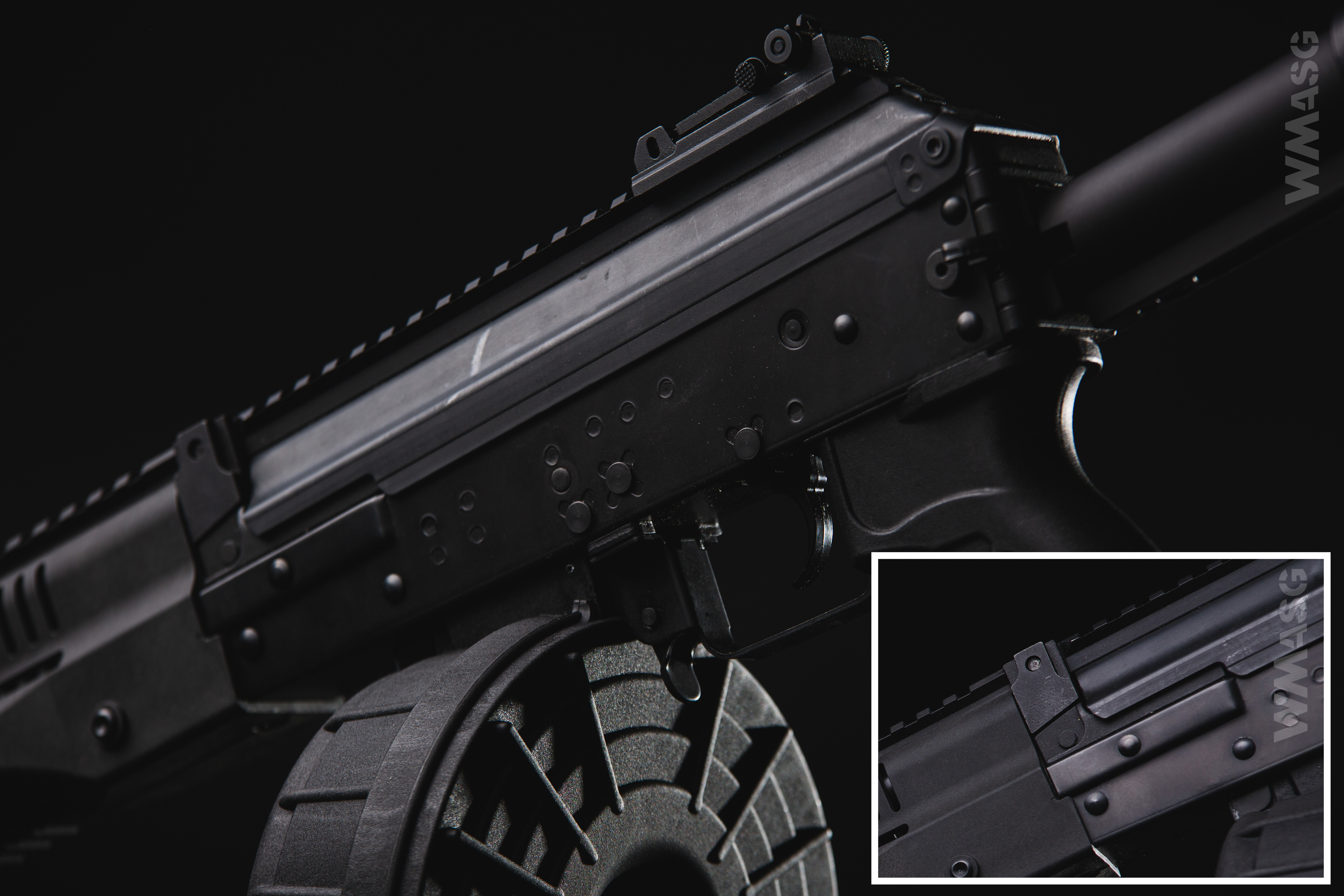
The receiver has no company markings. The only stampings are two settings of the fire selector switch.
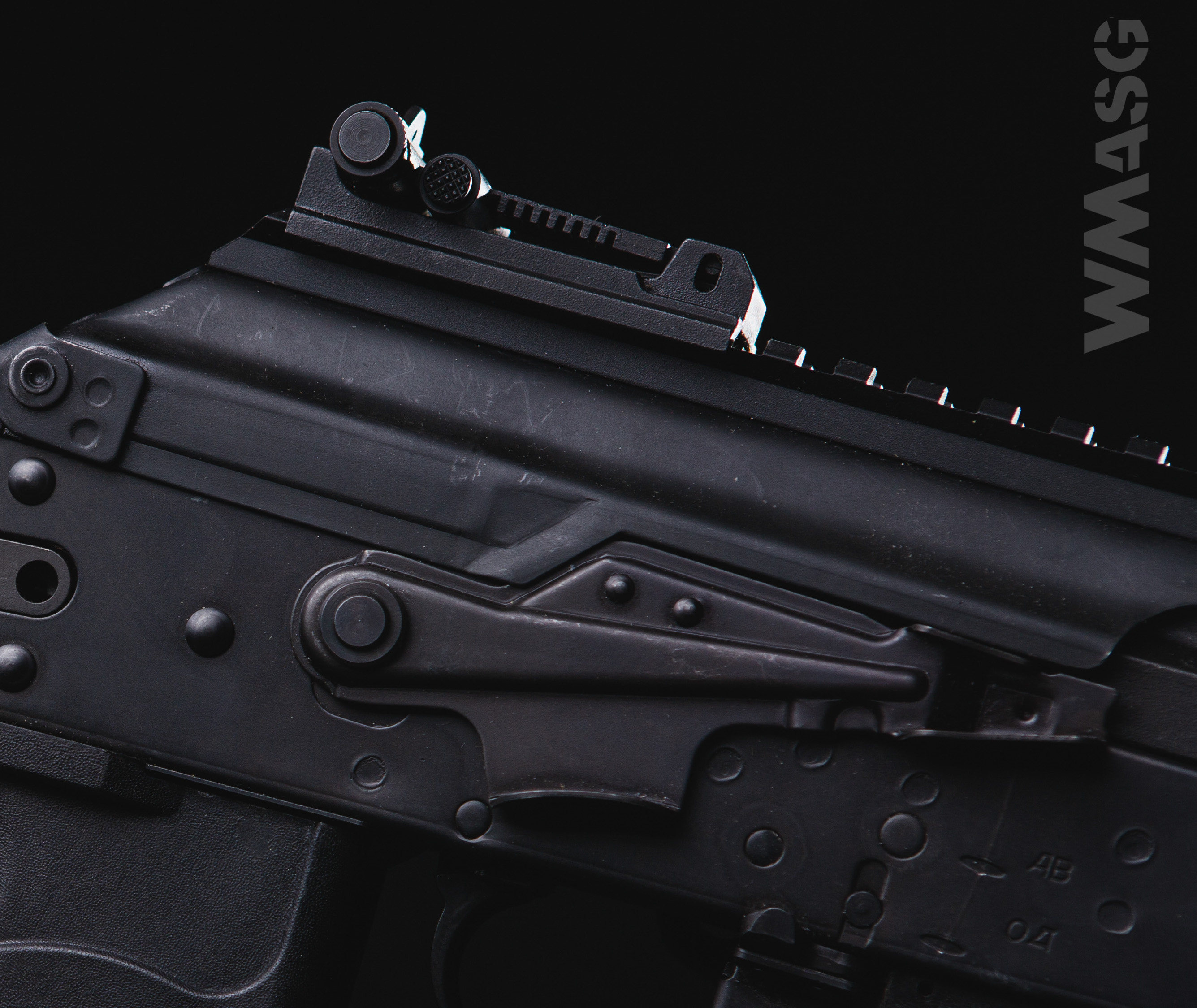
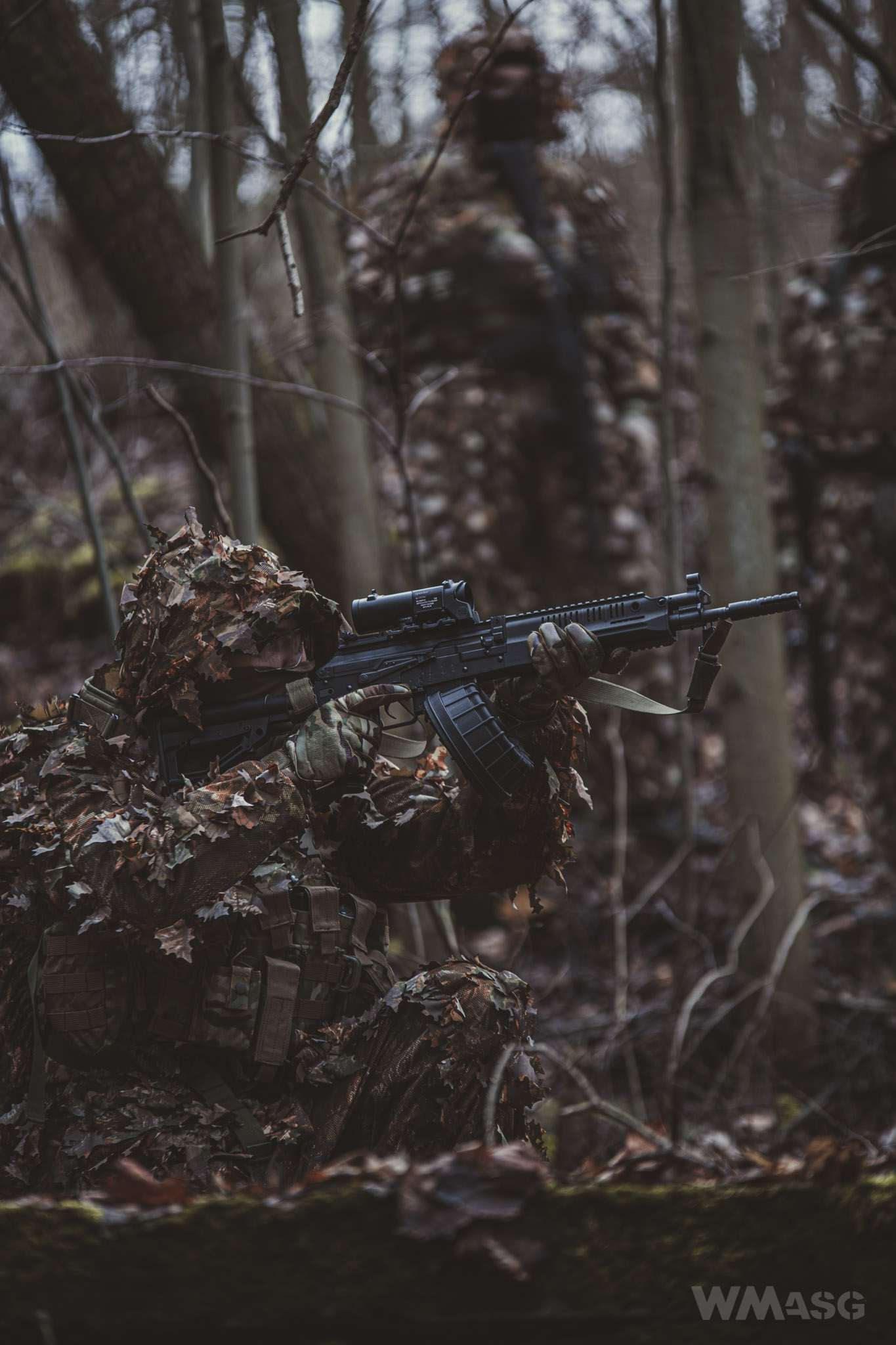
On the left side of the receiver the RPK-16 does not have a mounting rail. It was replaced by a standard Picatinny rail located on top of the receiver cover, which seamlessly connects to the upper handguard rail. This solution provides a lot of space for mounting optical or opto-electronic sights and other targeting devices. A traditional AK rear sight was also mounted on the rail, in which can also be adjusted horizontally. The knob on the right is used for this. This is exactly the same sight that can also be found on the AK-12/15.
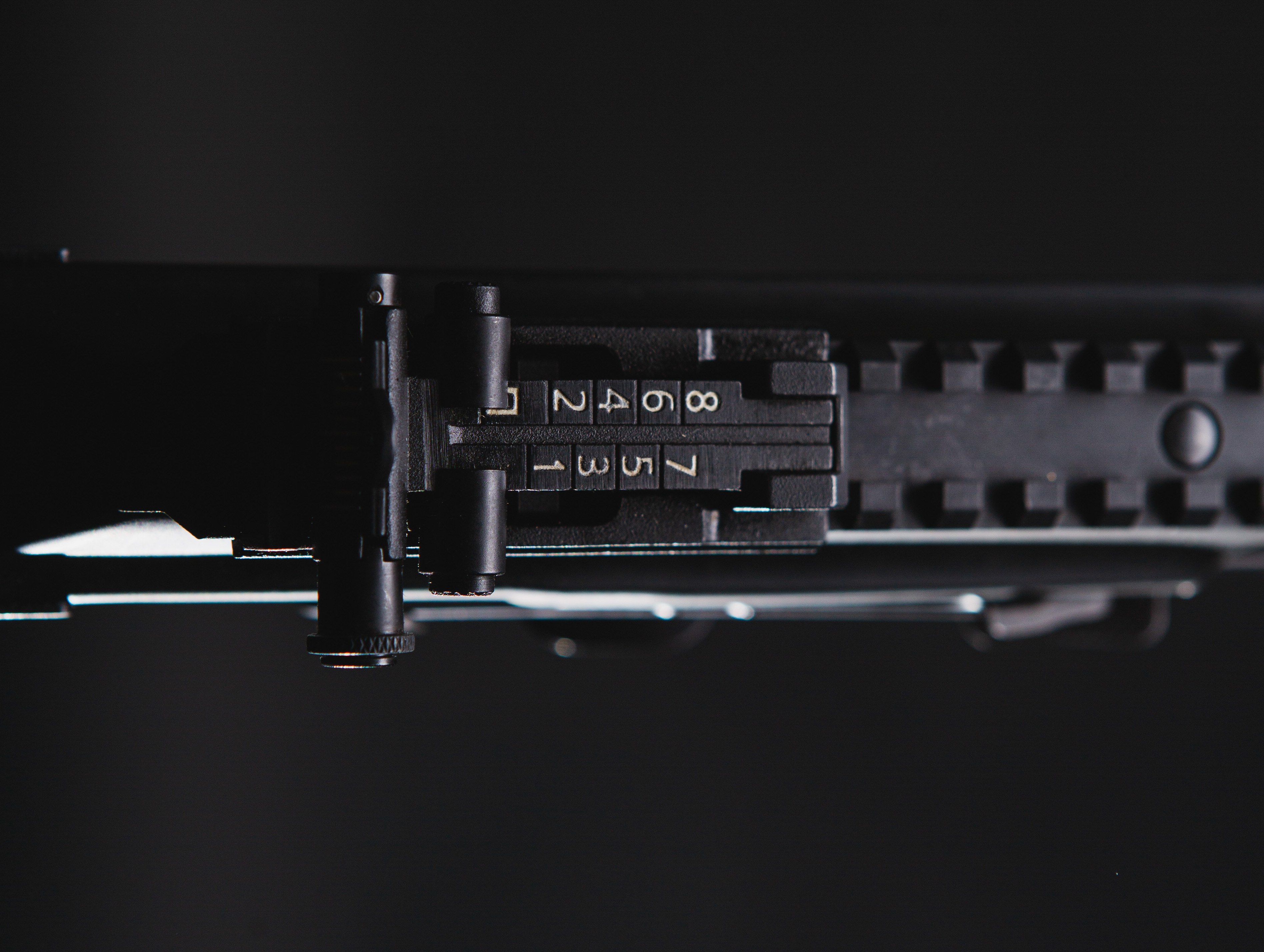
You have to get used to it. The hole diameter is small - fast aiming requires a little practice.
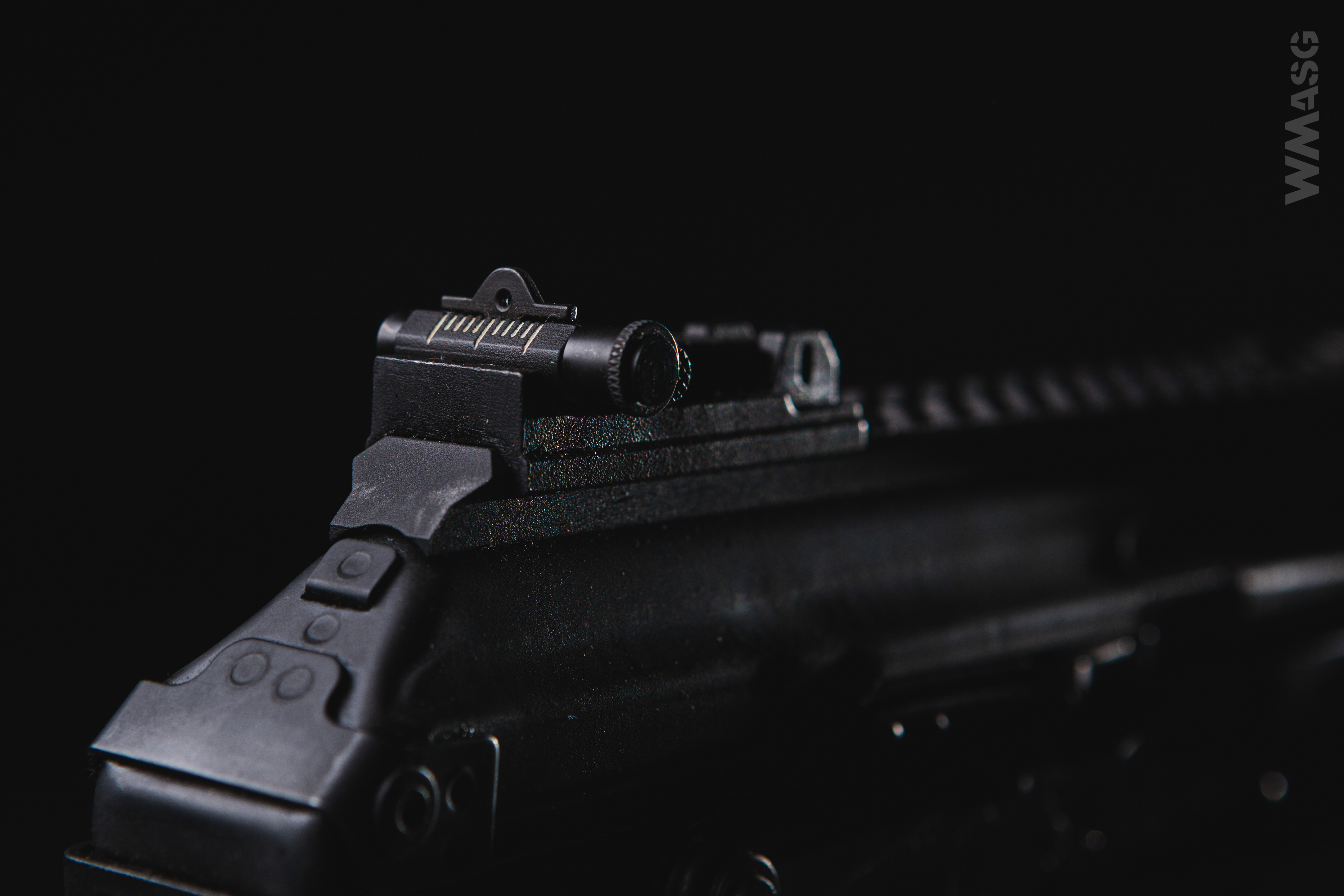
After removing the sight and the compression spring, you can unscrew the two Allen screws fixing it and move the sight to another place or remove it.
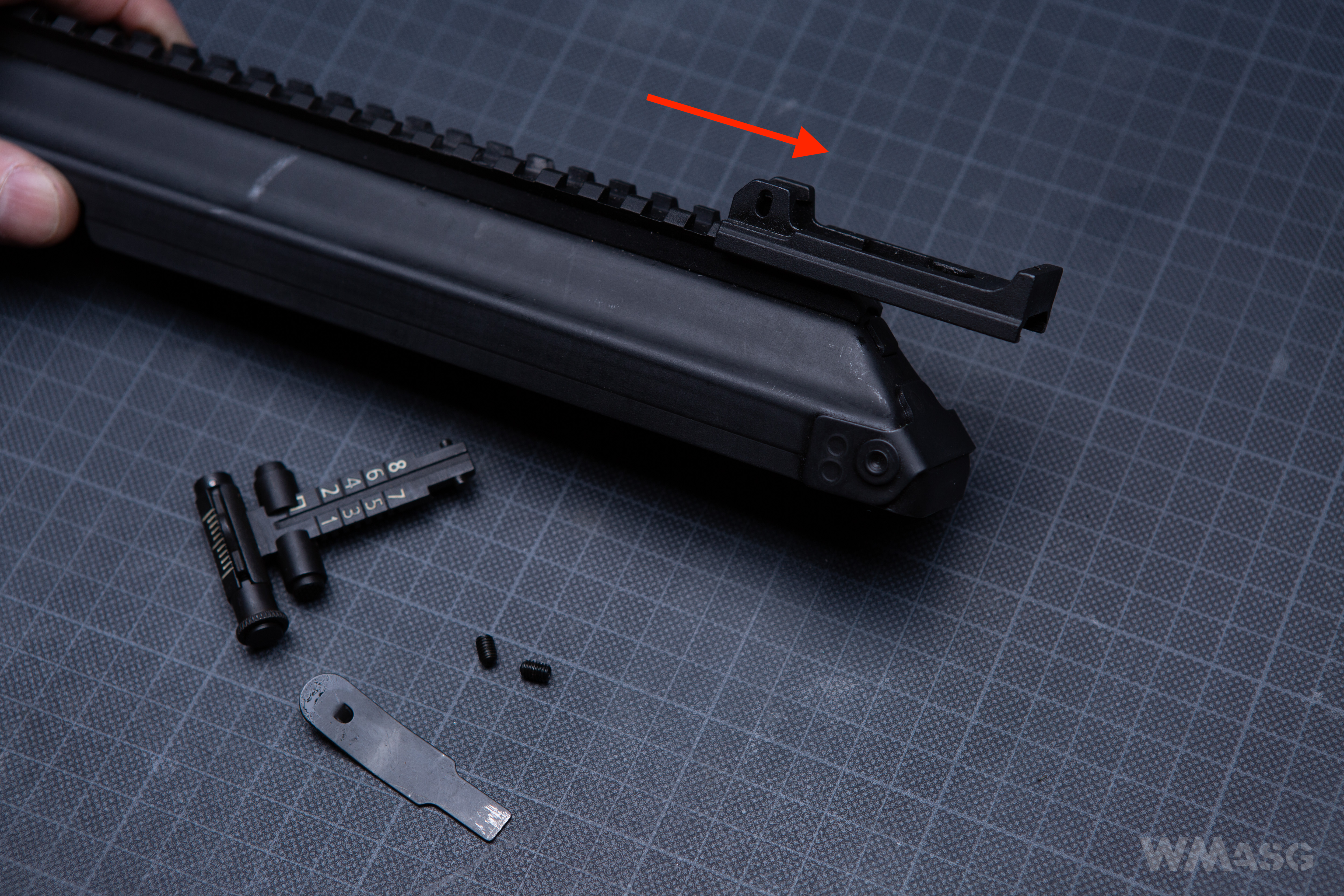
The RPK-16 pistol grip is the same one found on the AK-12 and the AK-15. It is ergonomically shaped and allows one to hold your weapon with confidence. In the original there is a toolbox inside, and it is pulled out by pressing the round buttons on the sides of the grip. In the replica, due to the motor placed in the grip, the buttons are only dummies and after removing the bottom we gain access to the grip fixing screw and the motor adjustment screw.

The shape and dimensions of the grip allow the use of the horizontal extension of selector switch, which in RPK-16 can be operated with the right hand index finger.
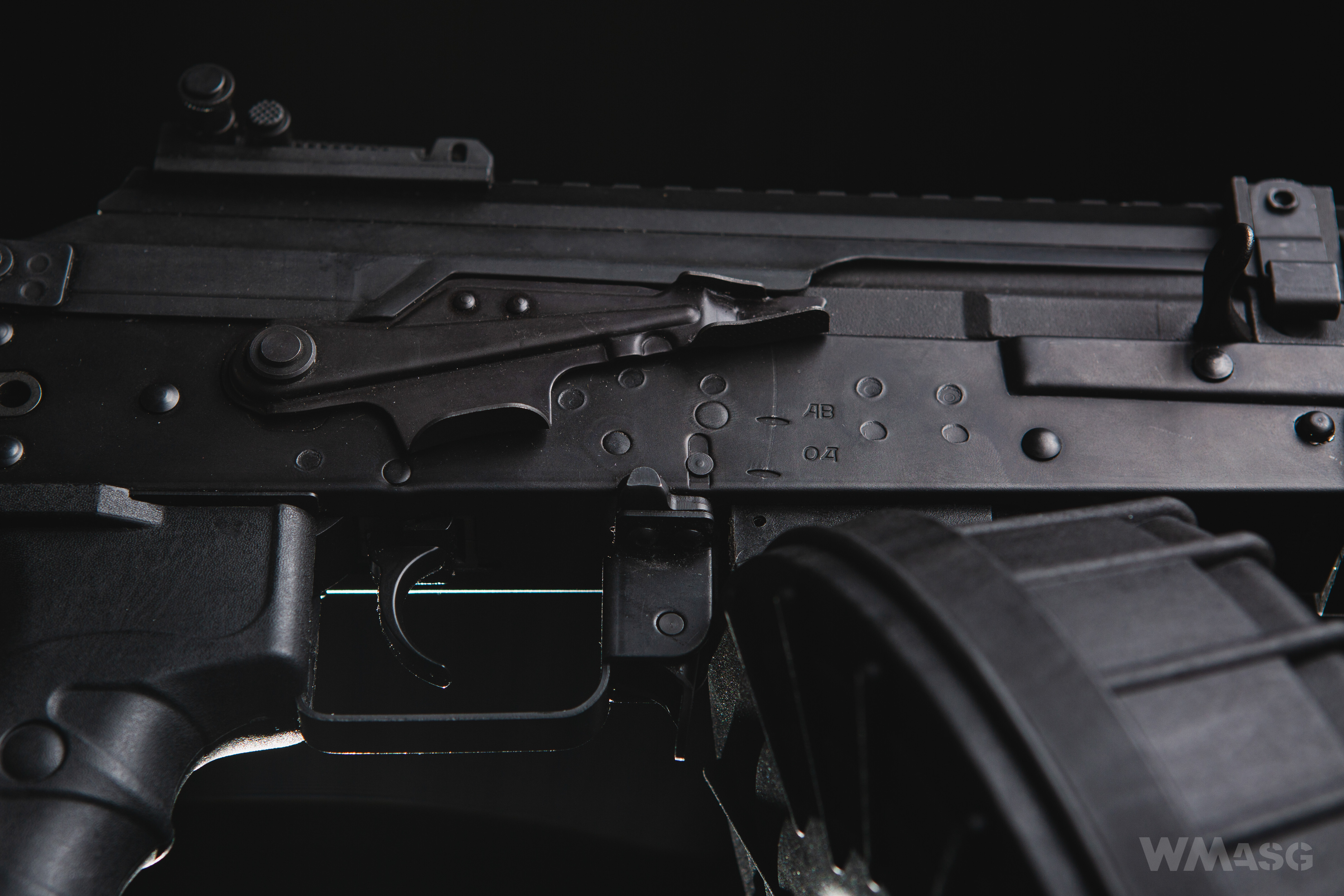
The stock is folded to the left of the rifle. The folding and unfolding system is very similar to that used in various variants of the AK-74, but in RPK-16 there is no latch on the left side of the carbine's receiver that holds the stock in the transport position. This role is played by an part of the hinge redesigned for this purpose. It is worth noting that the stock cannot be folded when it is maximally collapsed as the element just mentioned does not allow it. The stock can be folded when it is in positions 2 to 5.
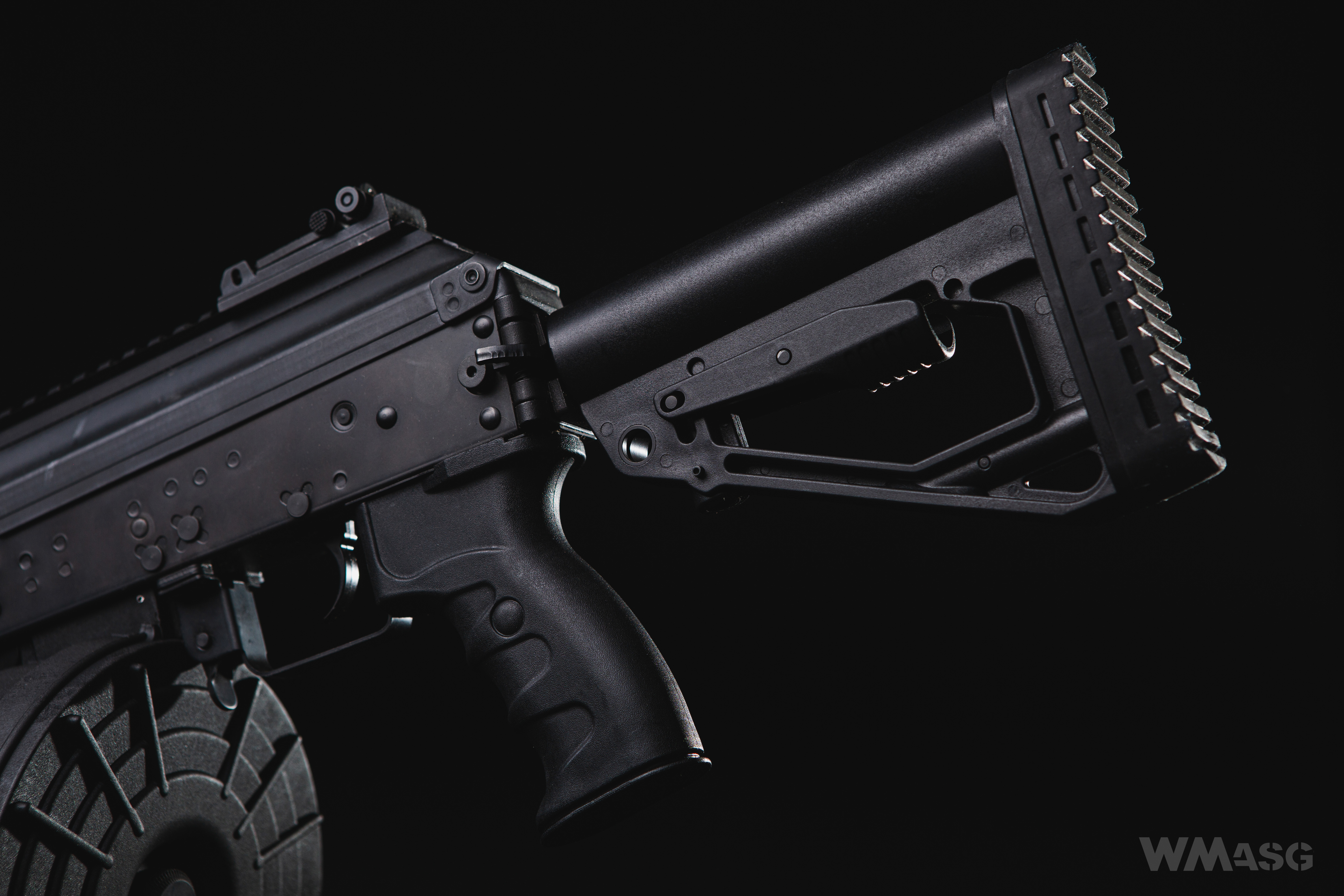
The stock guide has a profile compatible with the telescopic stocks of the AR system. This is a certain deviation from the original, in which the back of the bar is slightly lower. In the replica, the stock guide protrudes slightly below the receiver. This deviation, however, allows the use of any stock designed for a replica of the AR system.
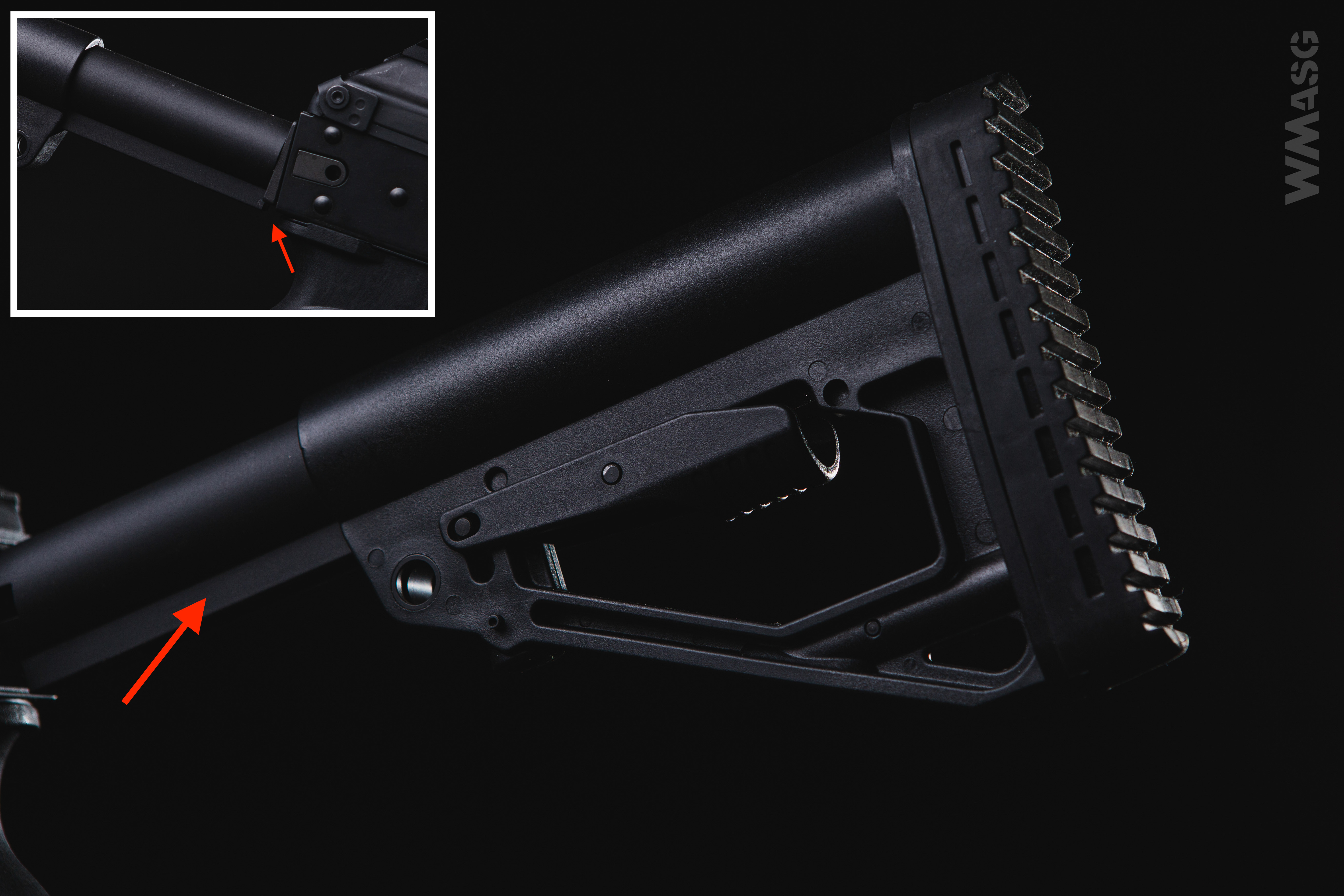
A standard solution with a push-in lever is used to adjust the stock position. In the front part there is a double-sided QD socket for attaching the carrying sling swivel.
The stock ends with a rubber butt plate, which can be removed after sliding its lock. By doing this we gain access to a small space inside the guide, which can possibly be used as a small storage space. In the original accessories for cleaning the barrel are stored inside.
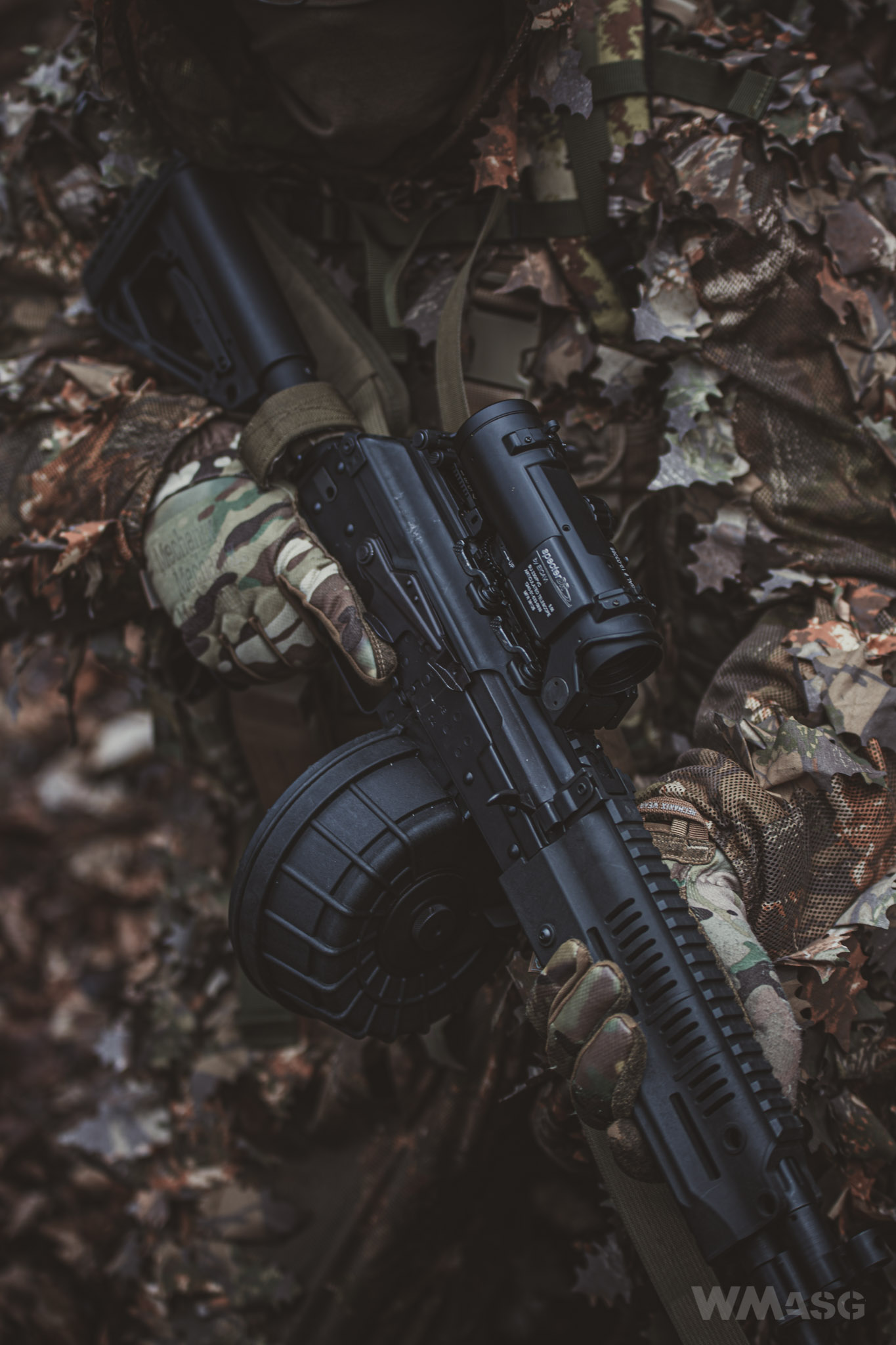
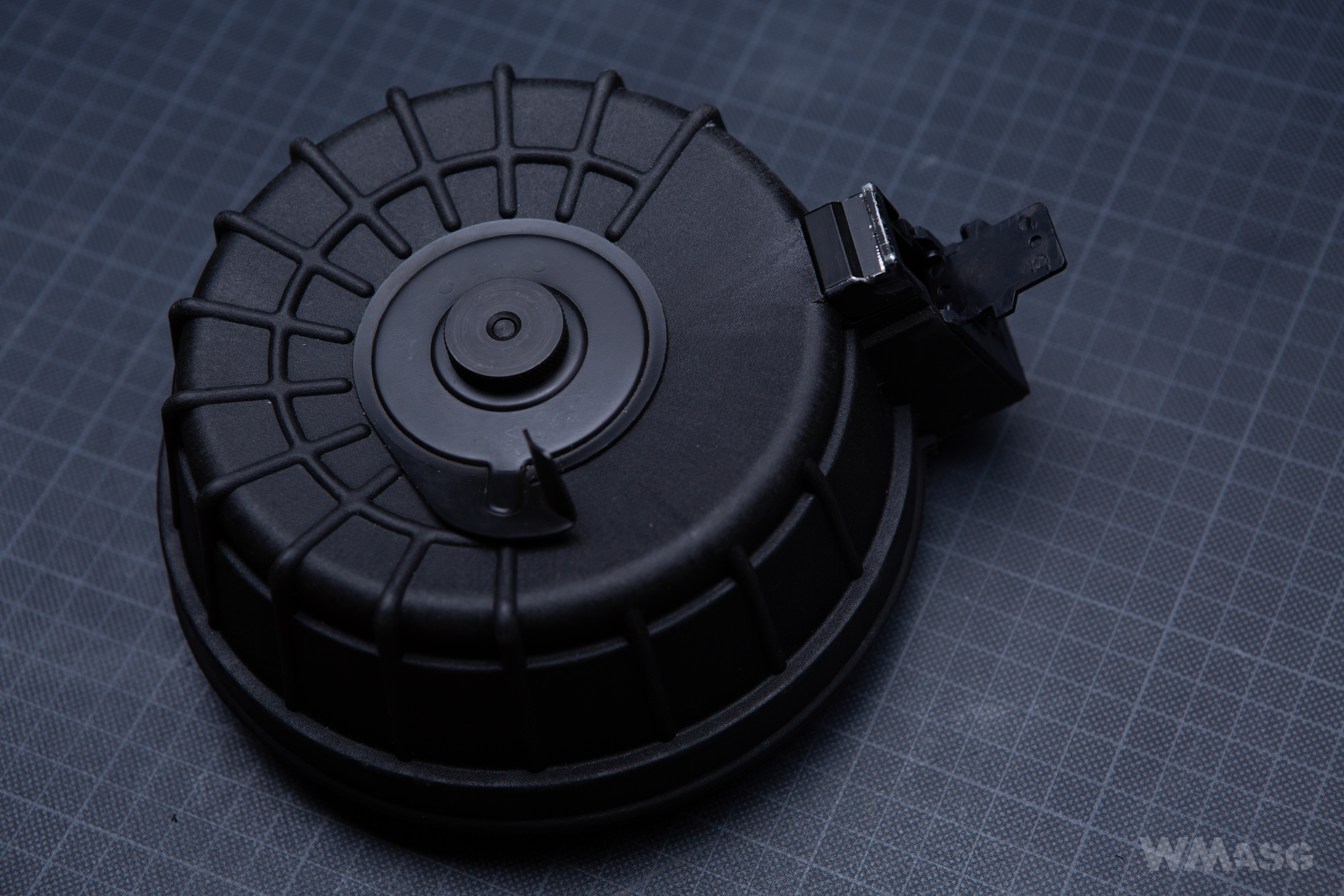
A drum magazine with electric drive is supplied with the replica. It is a polymer copy of a 95-rounds magazine used with the real weapon. The BBs can be put inside it in 2 ways. Through a standard flap in the upper part or directly to the tray after removing the back plate of the magazine. The plate is removed after turning the large round nut placed on it.
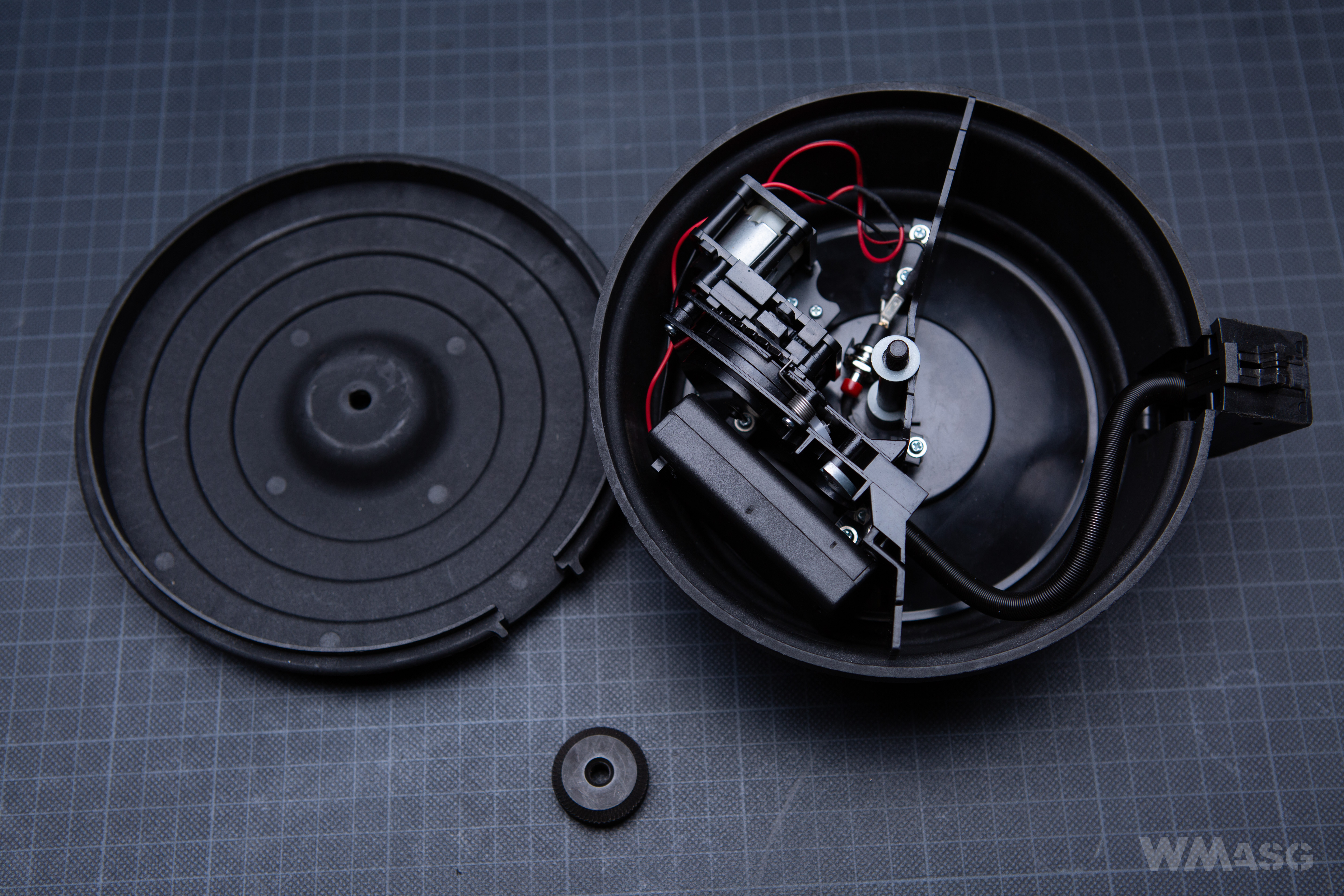
This operation must also be performed to replace the batteries that power the magazine. You need 3 regular or rechargeable AA batteries. They are placed in a special container protected against opening by a small Phillips screw. The container has its own switch, which protects the magazine against accidental operation during transport.
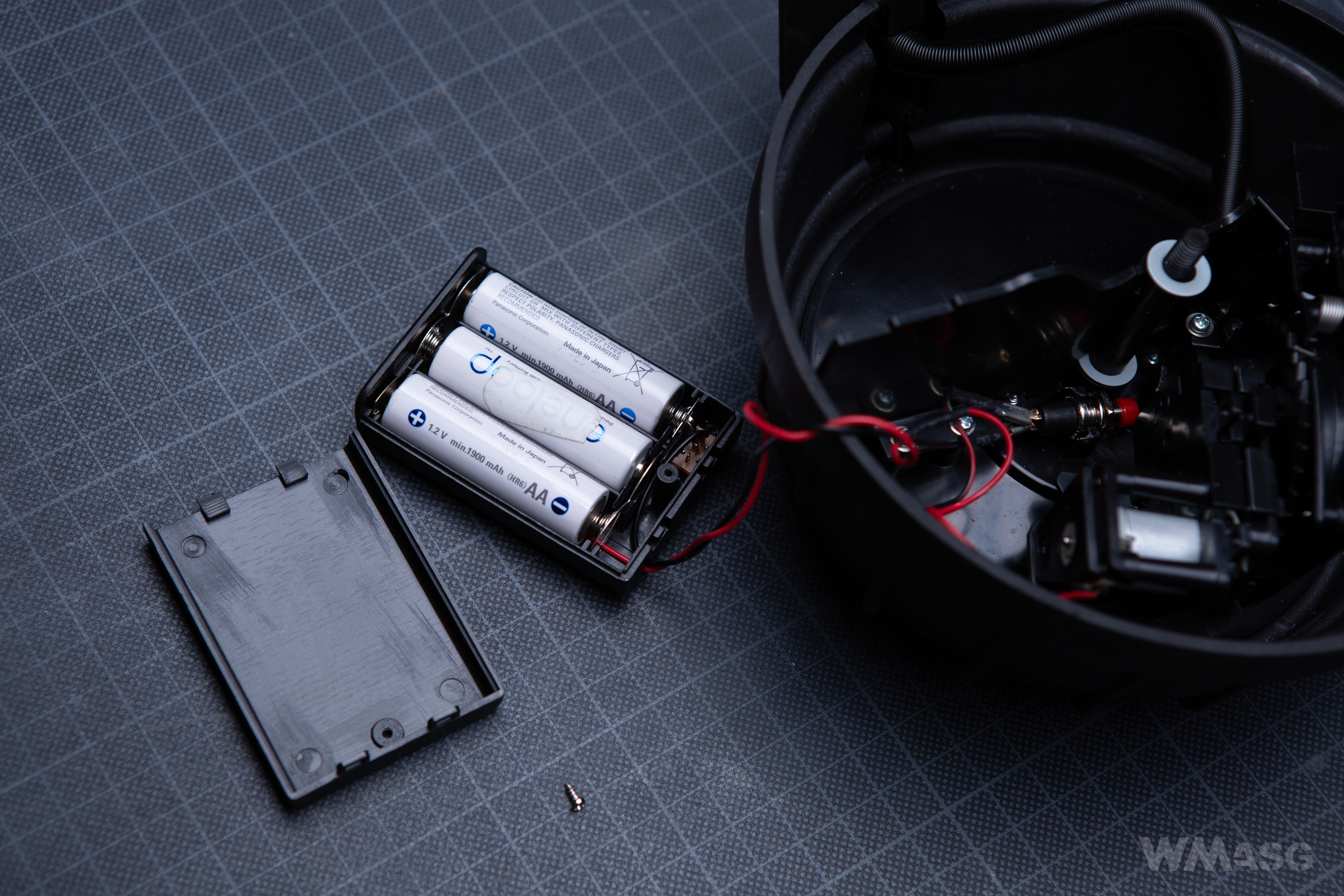
While firing the magazine is operated by periodically pulling up a flat lever on the front of the magazine. In the tested copy, the lever did not want to return to the resting position when the magazine was ready to work. The reason was a too small diameter of the hole in the rear plate and the resulting skew of the lever rotation axis. A slight enlargement of the screw hole in the back wall solved this problem.
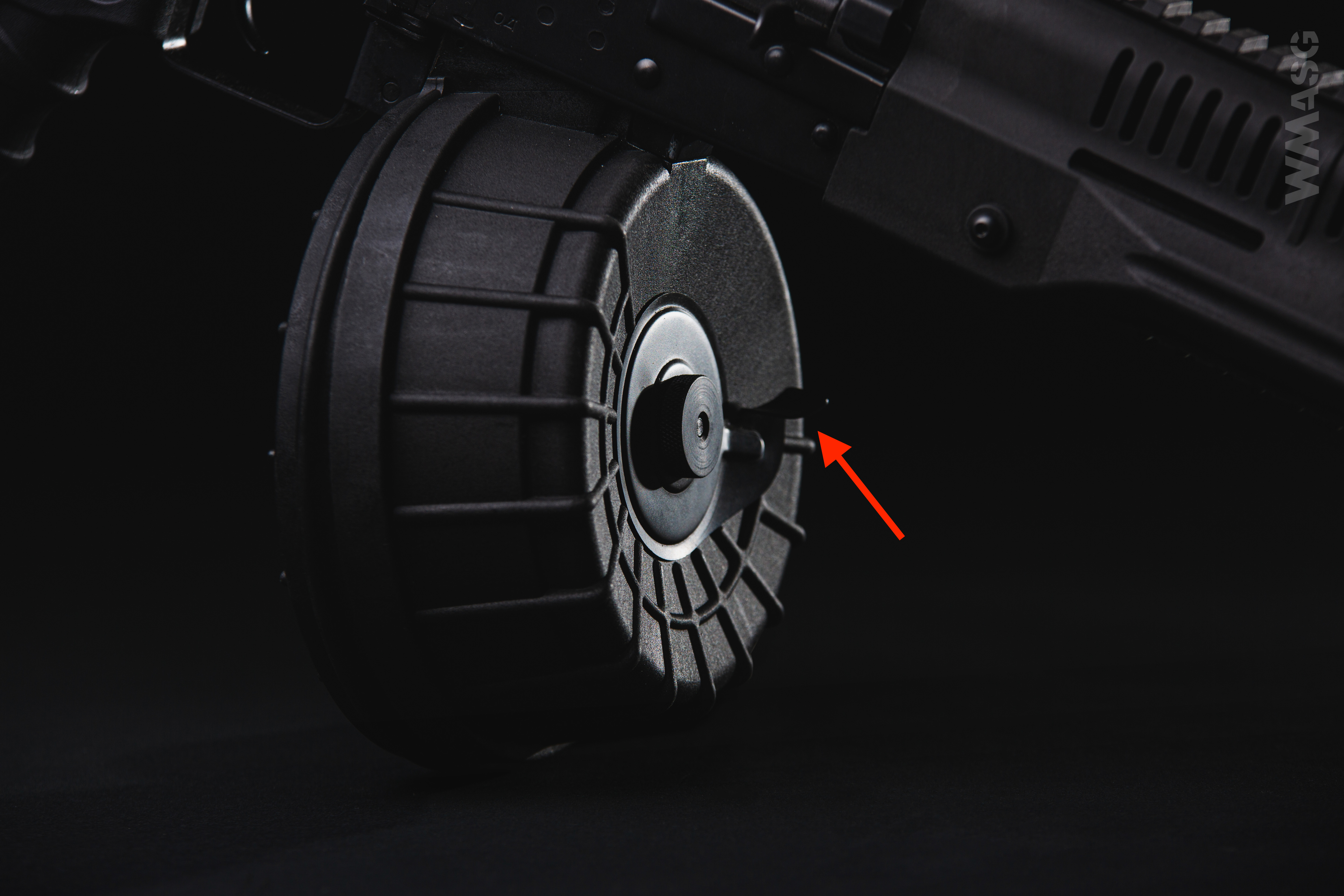
This lever presses the ordinary electrical switch placed inside the magazine (the one with the red tip).
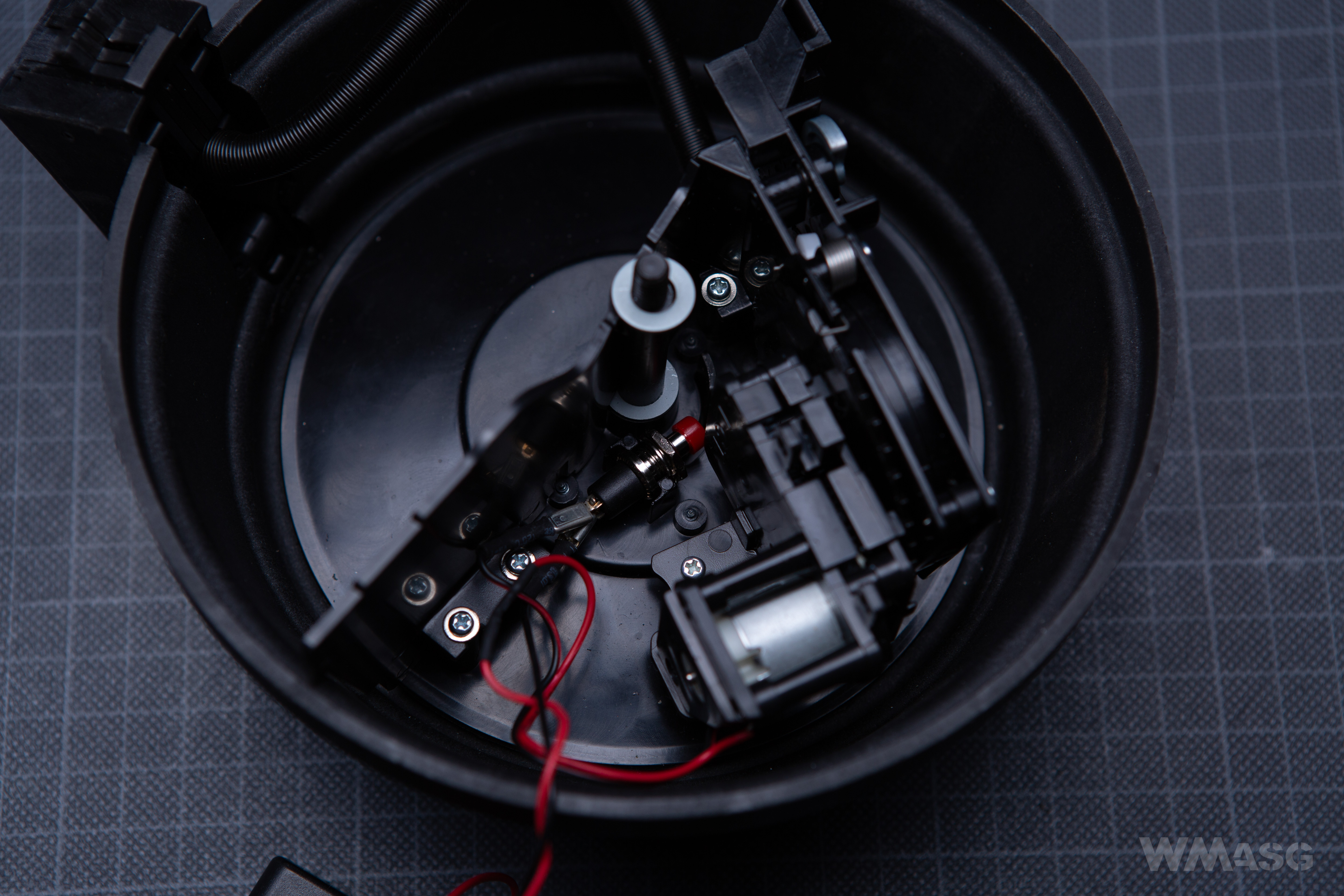
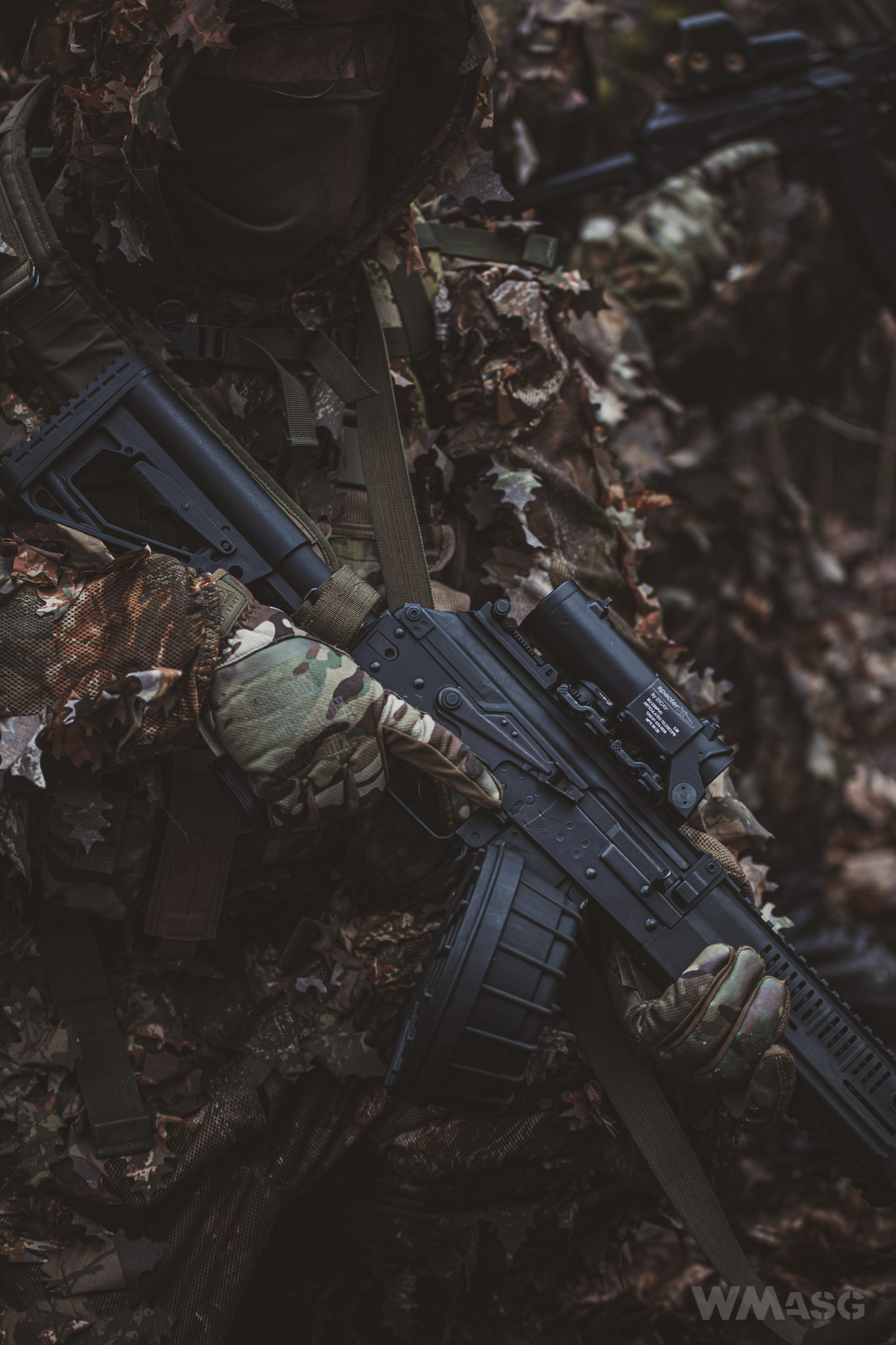
Space for the main battery is provided under the cover of the receiver. The method of its disassembly is completely different than in other AK replicas. There is no button on the back of the cover. To take it off one has to rotate the lever located between the handguard and the cover by 90 degrees and slide it out completely. The miniature shows the lever in the resting position.
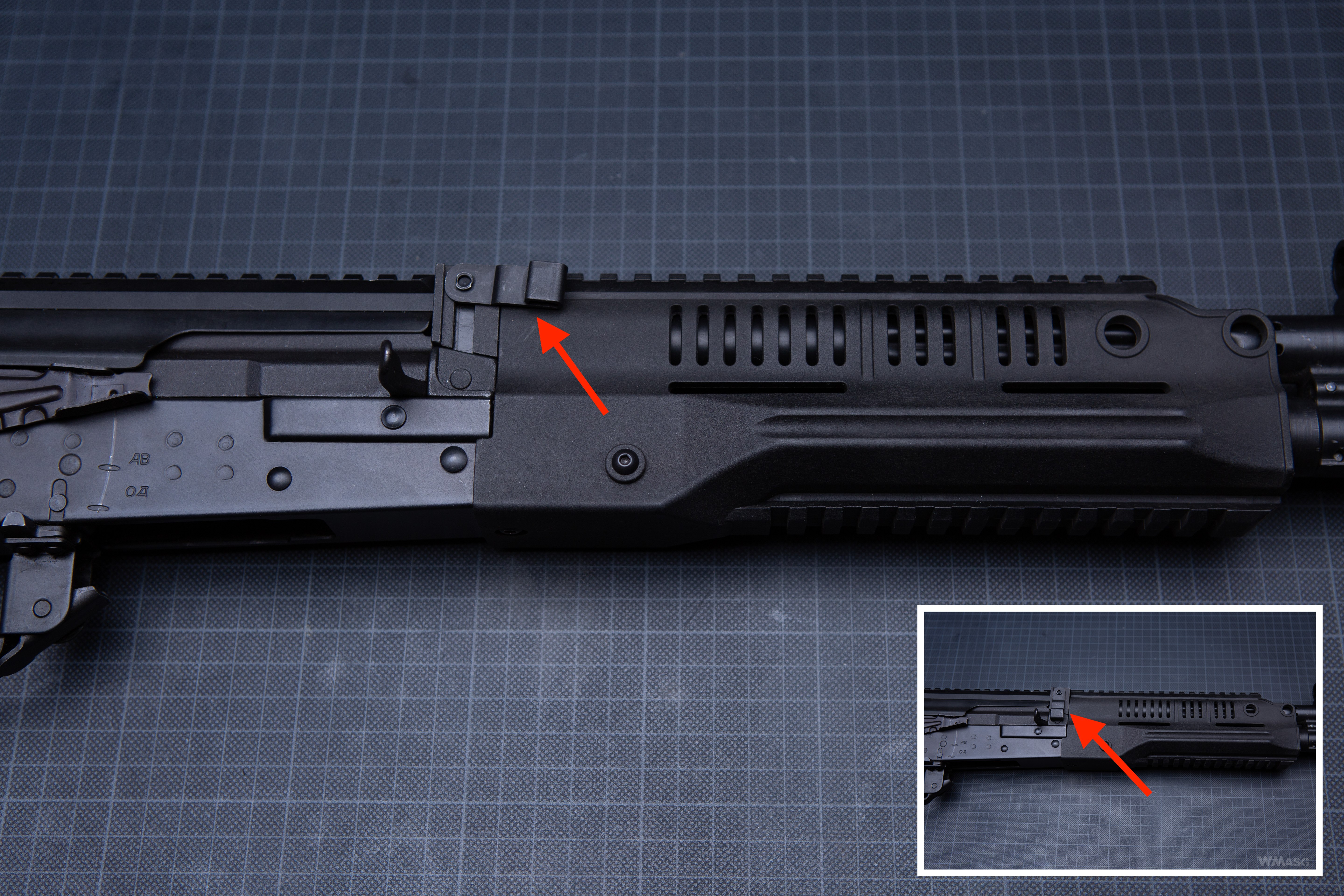
The lever removed and the cover slightly moved back:
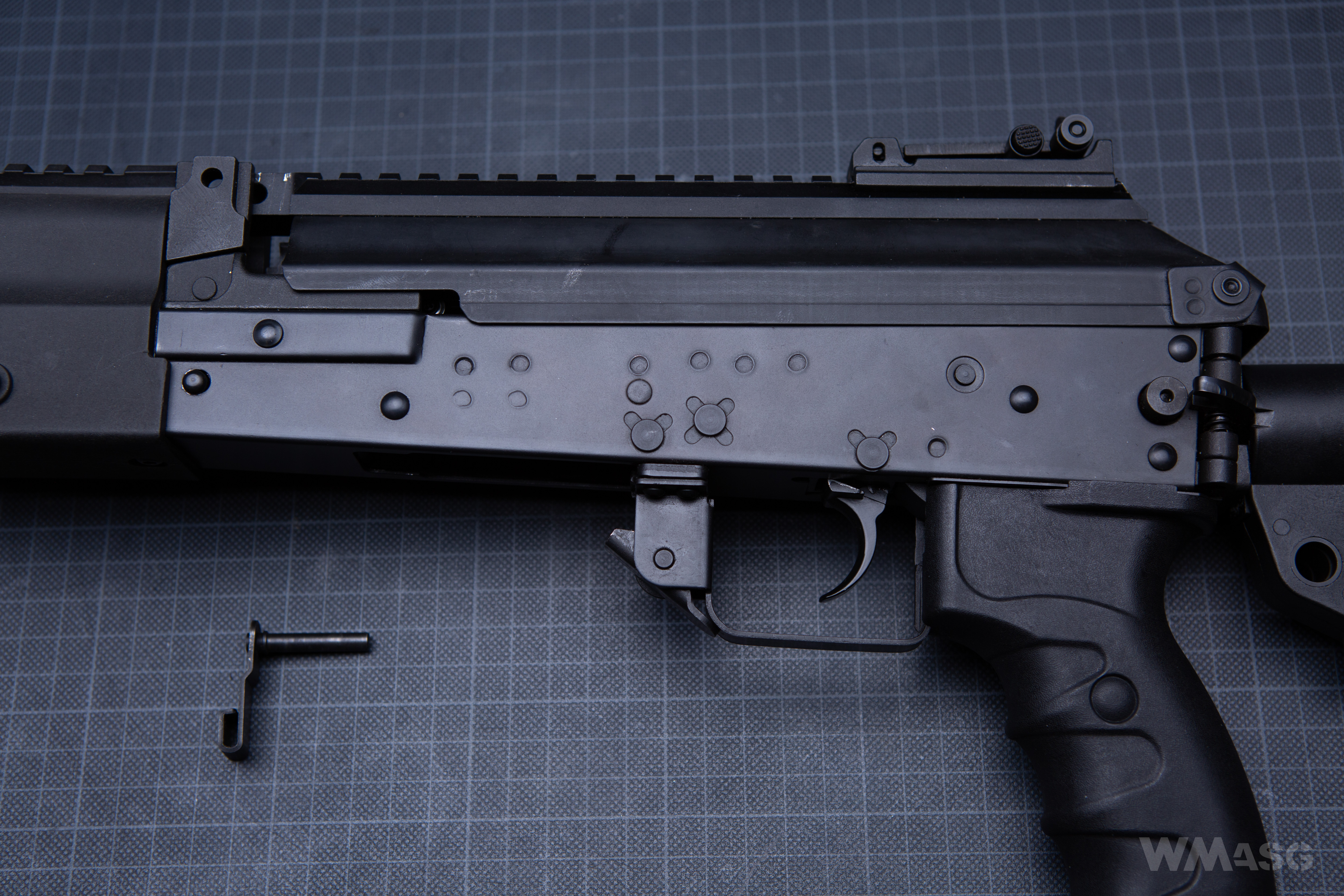
The cover has to be pulled entirely backwards. This solution is in line with the original. Below you can see one of the latches with which the cover is secured after sliding it forward. It is surprising that there is a standard cover button, which in the case of the RPK-16 (and the AK-12/AK-15) only serves as the rear attachment of the dummy bolt carrier - it is completely hidden under the cover and is not used for anything else.
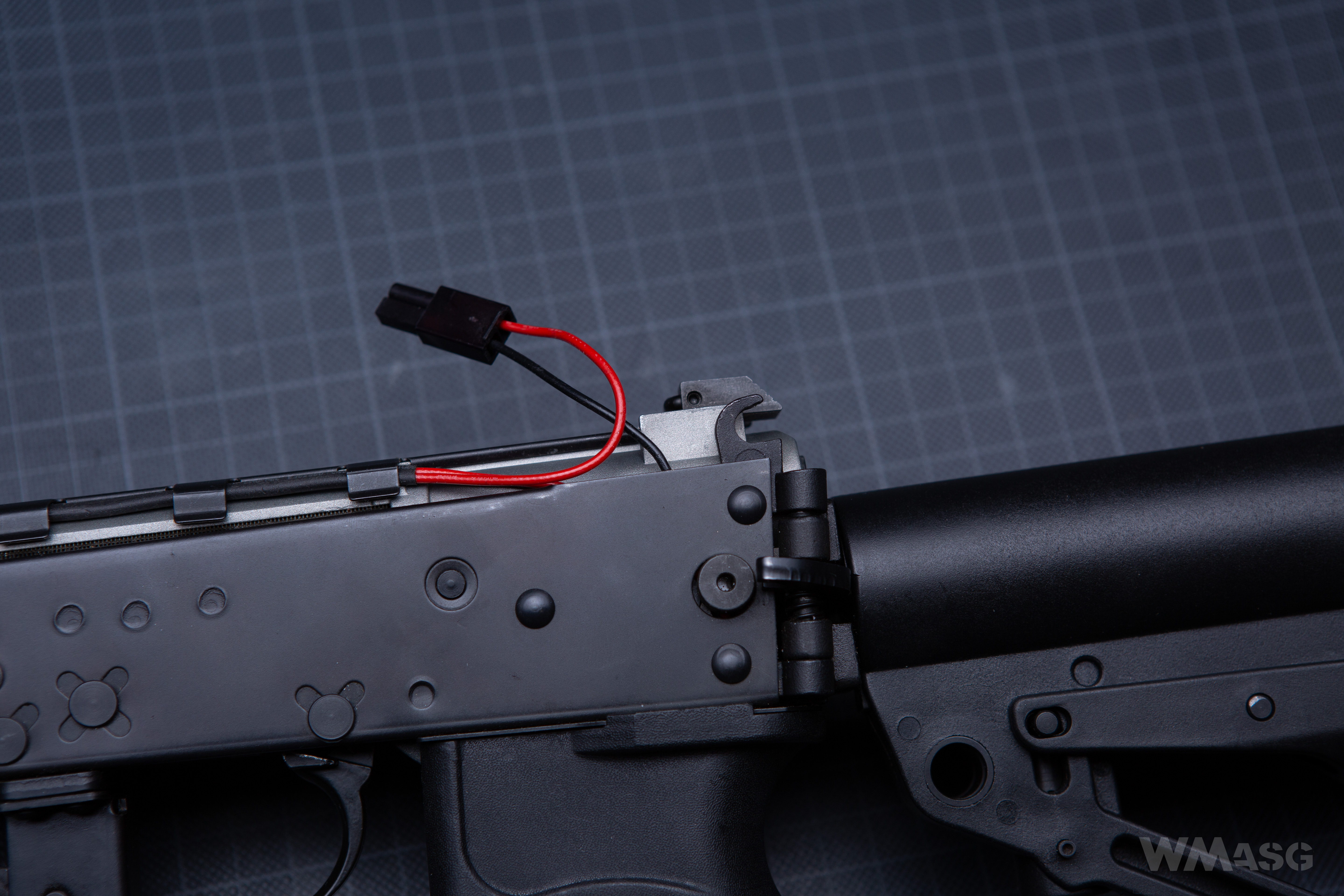
The small amount of space for the battery puts a lot of restrictions on a replica which is to be a support weapon. There is enough space for a stick type battery, whose capacities oscillating between 1100-1500 mAh, with relatively low current efficiency.
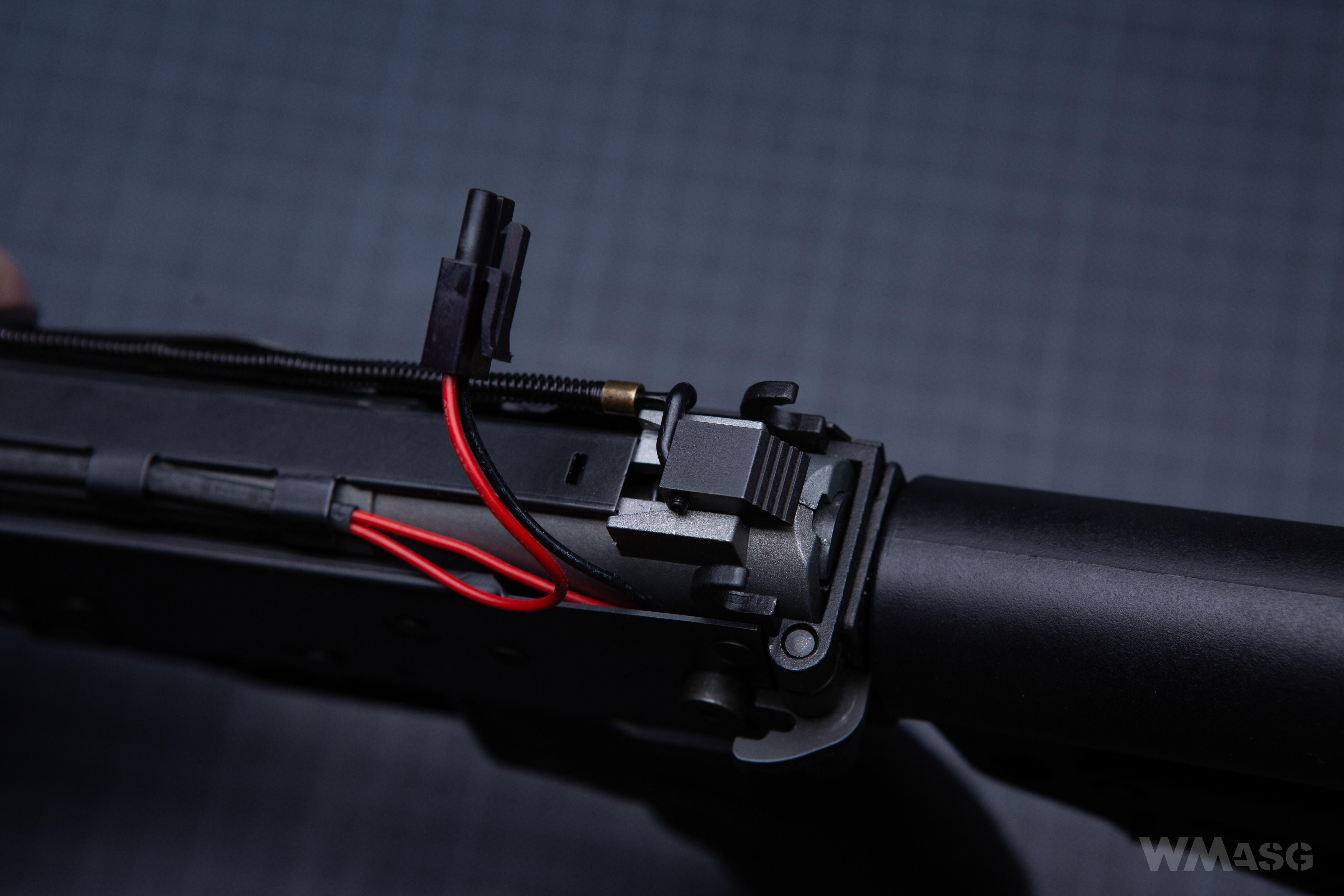
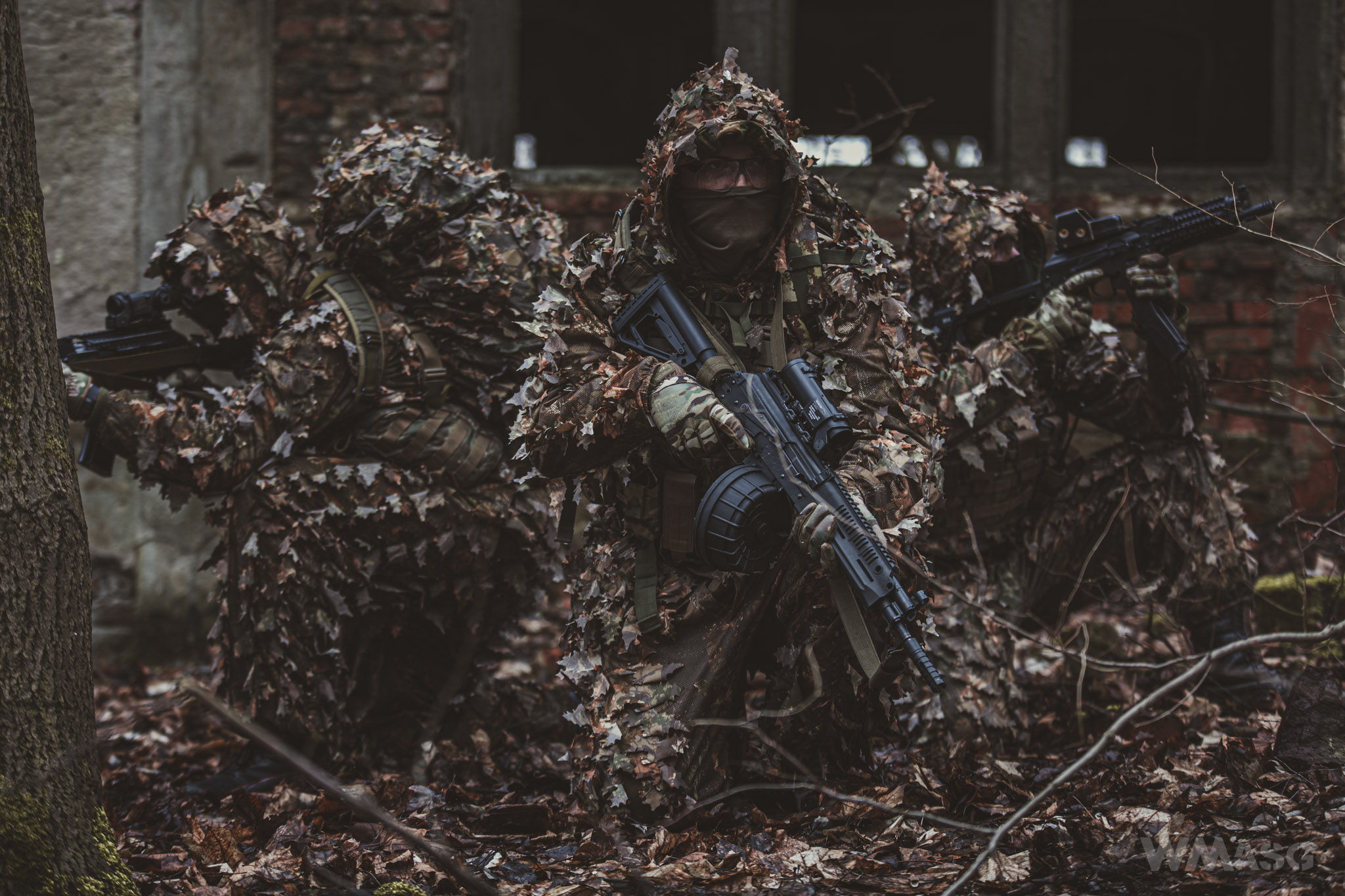
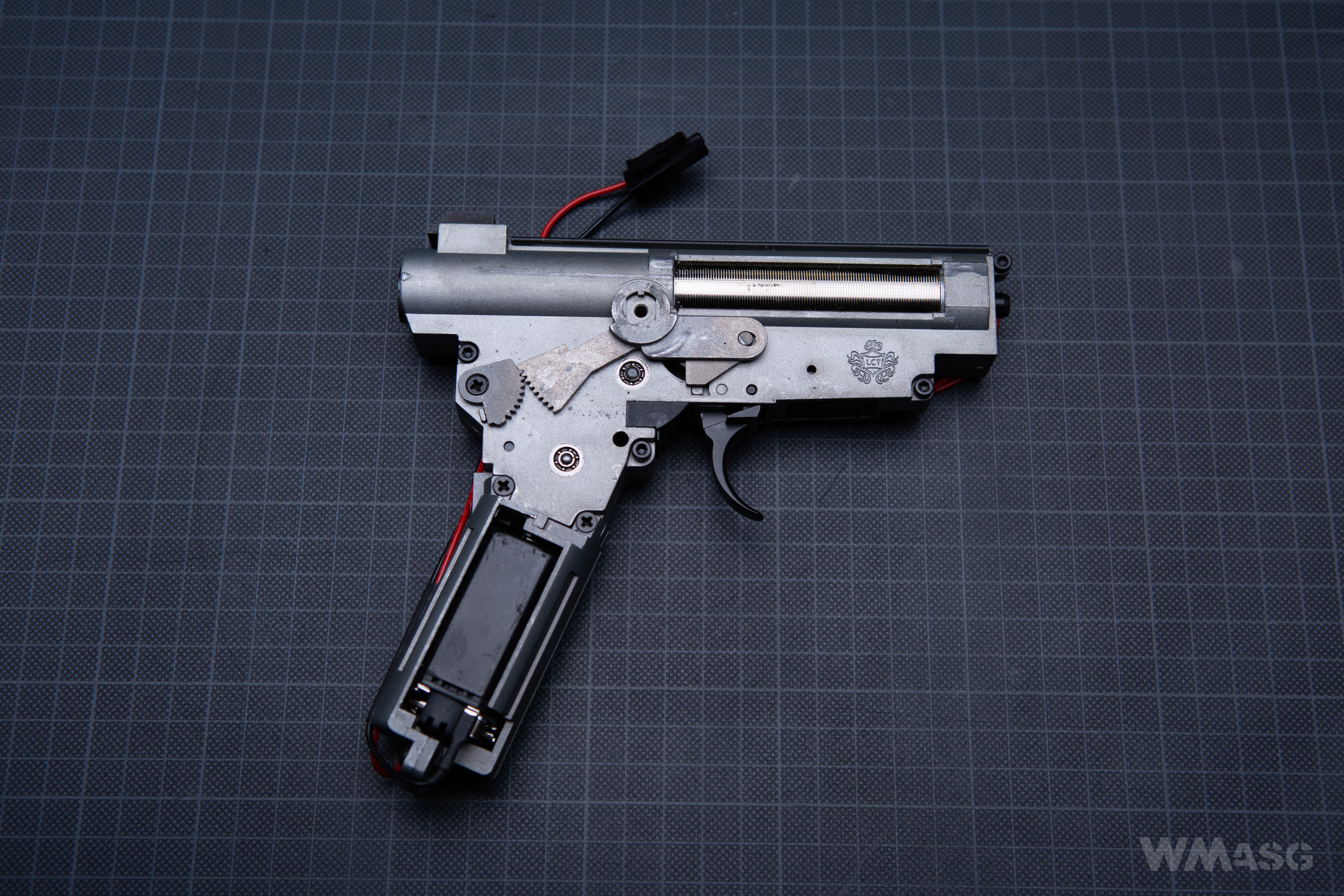
From the mechanical side, the replica is made 100% in accordance with the LCT standard. We have a V3 gearbox with steel gears mounted on ball bearings and a tight pneumatic system with a steel toothed piston, a sealed nozzle and a piston head and a spring guide with bearings. The muzzle velocity about 400 fps using 0.2 BBs and HopUp set to zero.
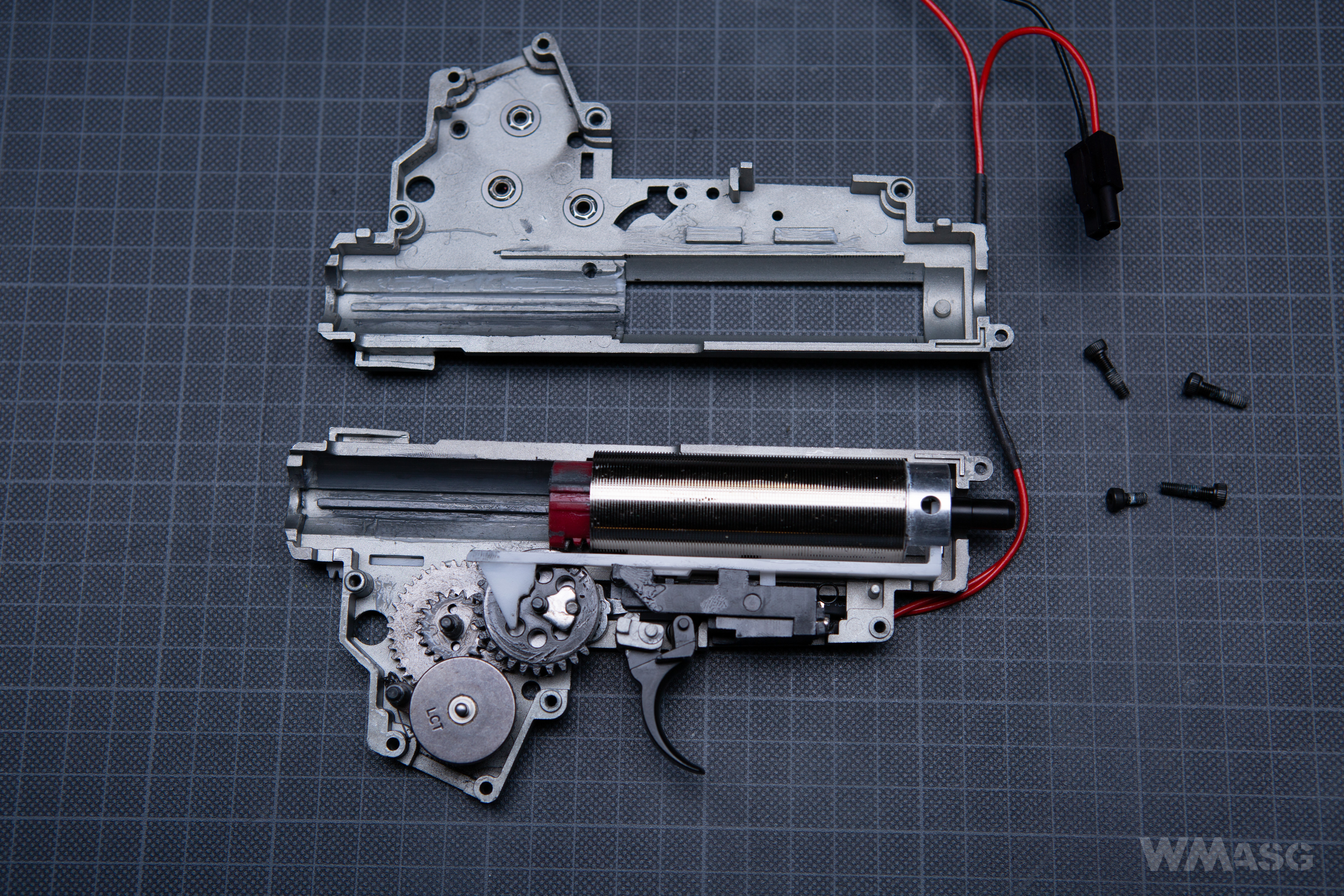
The frame allows the spring to be replaced quickly. Unfortunately, it is necessary to remove the gearbox from the replica's receiver.
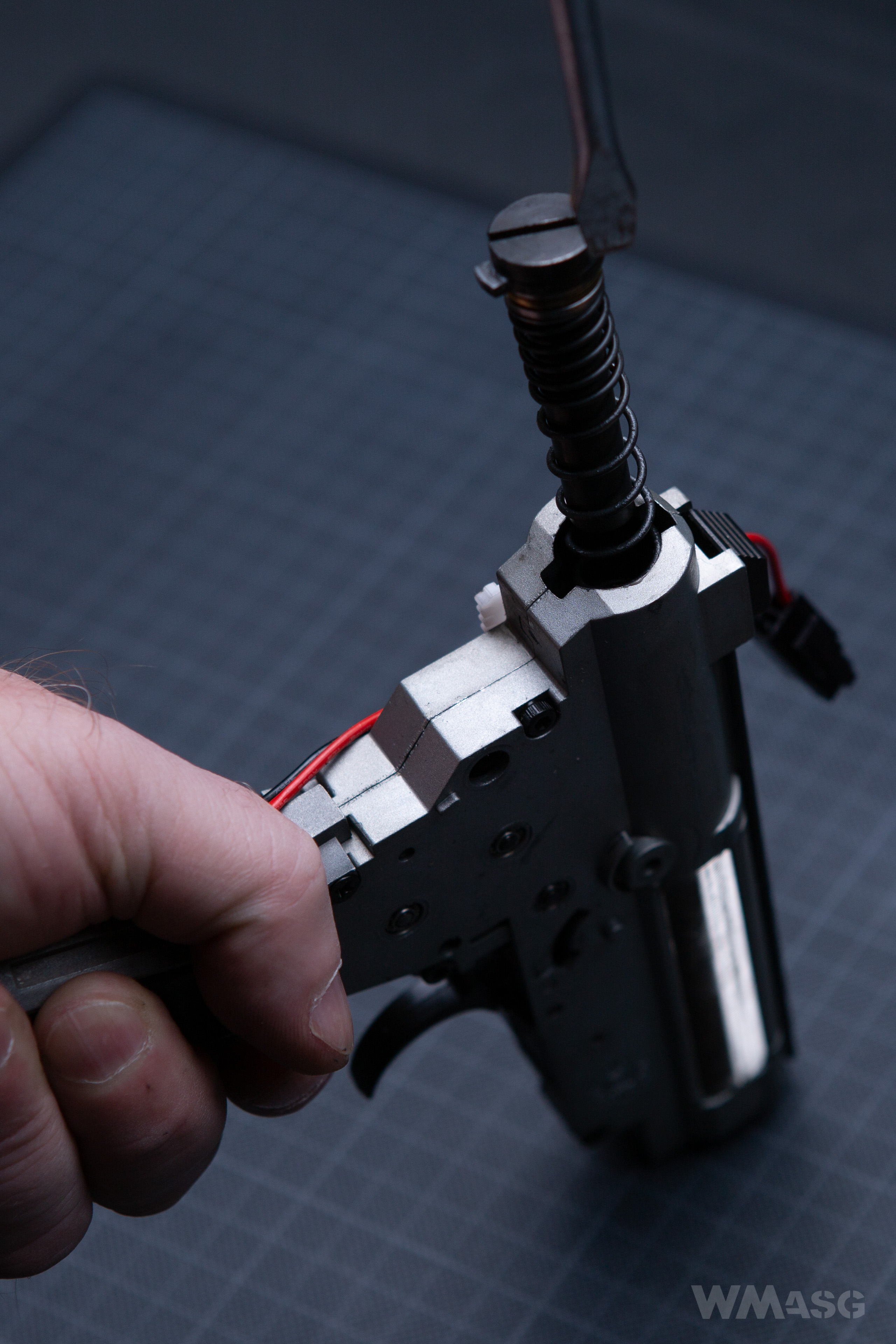
During the shooting tests, the replica did not surprise us with anything special. The mechanism works correctly, without unwanted sounds. Range and accuracy were also comparable to the vast majority of replicas. Still, we noted two things. First of all, when shook, the replica made a metallic sound. We located the source quite quickly. The inner barrel turned out to be the noisy element, which moved quite freely in the outer barrel. It is also worth paying attention to the end of the barrel as it was rather not done using a turner. We hope that the barrel looks like this only in the tested, pre-production copy.
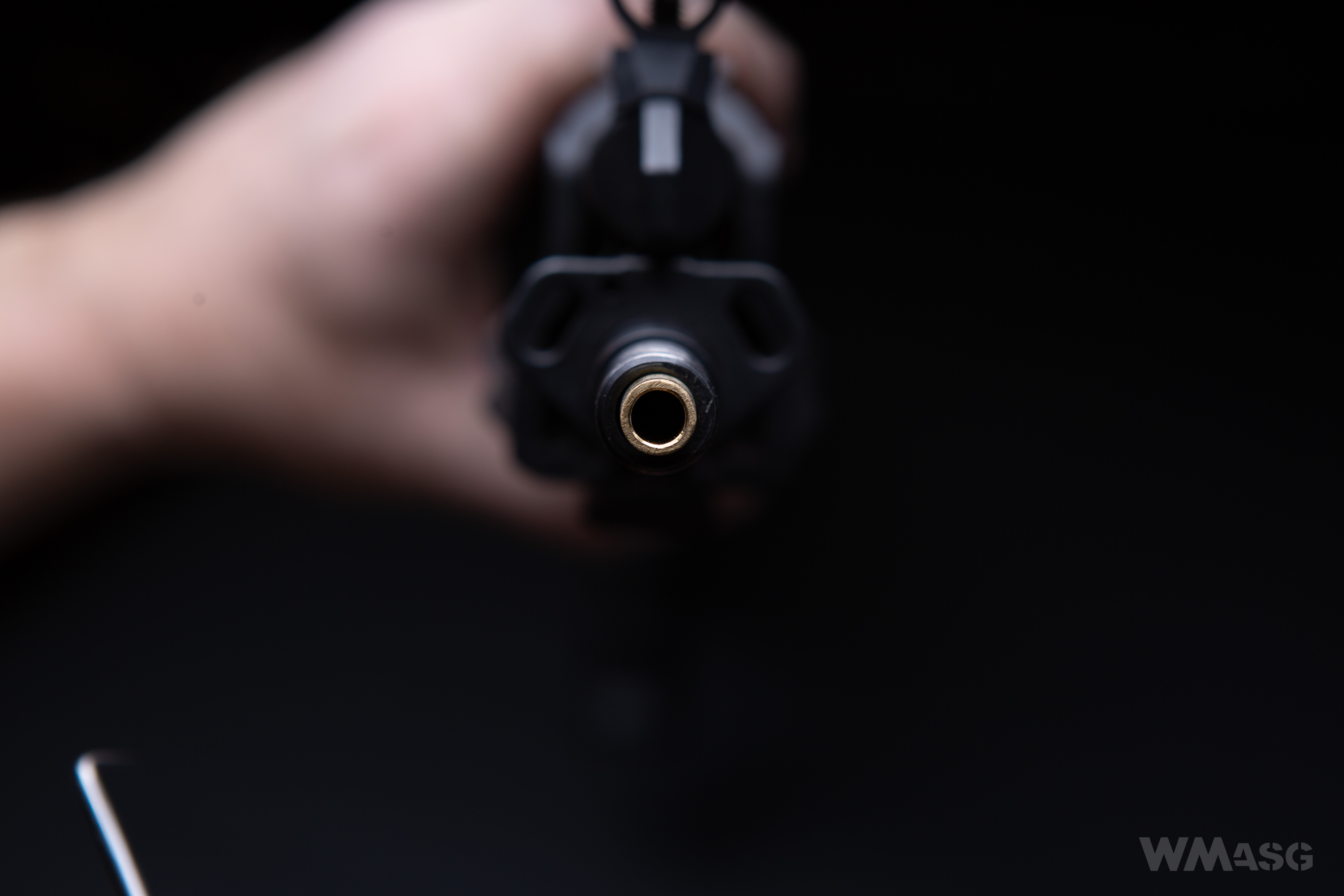
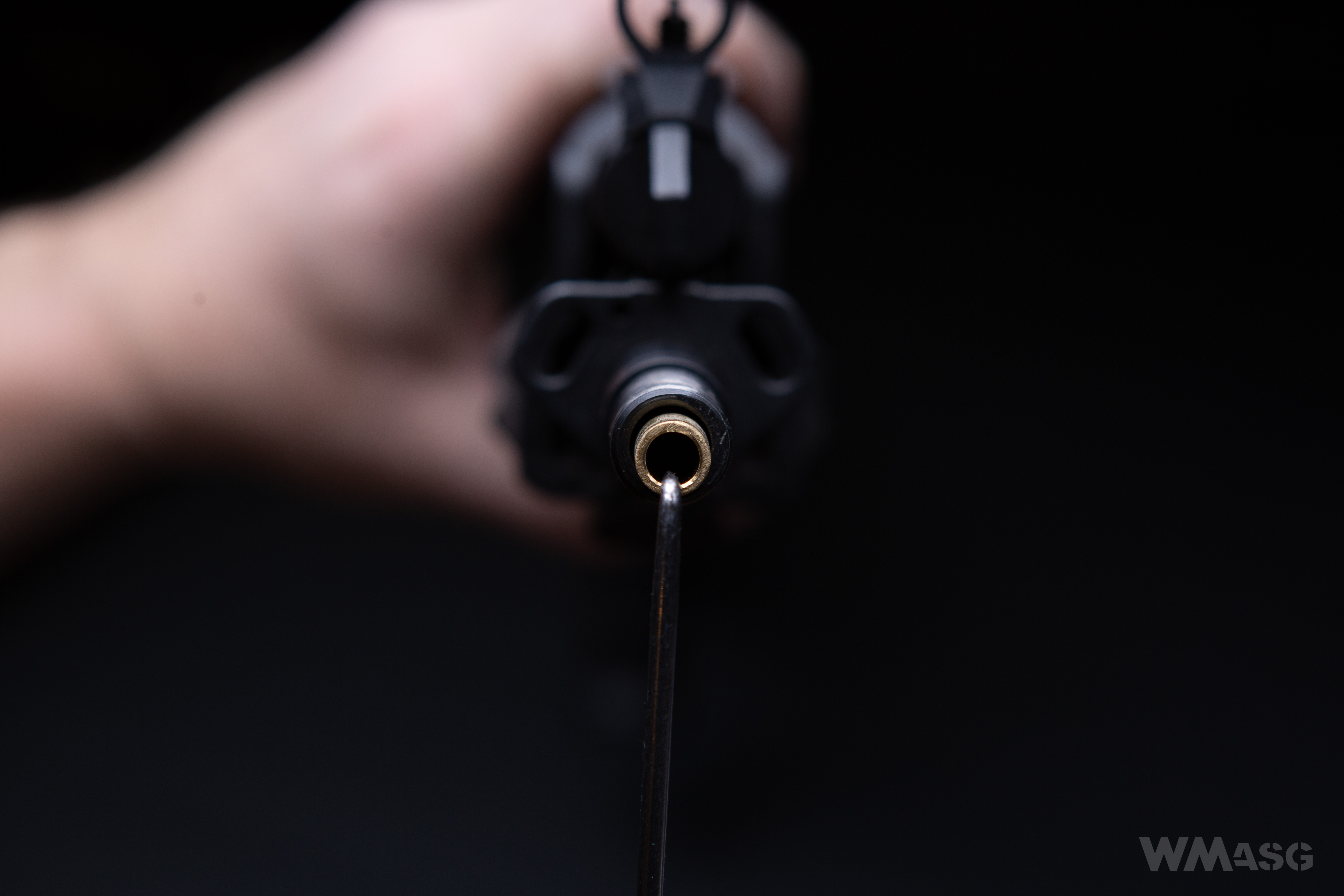
The second thing we observed was some discomfort connected with the size of the magazine, which you just have to get used to. An easy solution is to replace the drum magazine with classic curved magazine, for example those from used in the AK-12, which fit and feed without any problems. An additional benefit of this decision will be the possibility of folding the stock with a magazine inserted into the replica. When the drum is inserted it is not possible. Apart from that the weight will remain a problem as a dry replica, that is without a battery and a magazine, weighs nearly 4 kilograms.
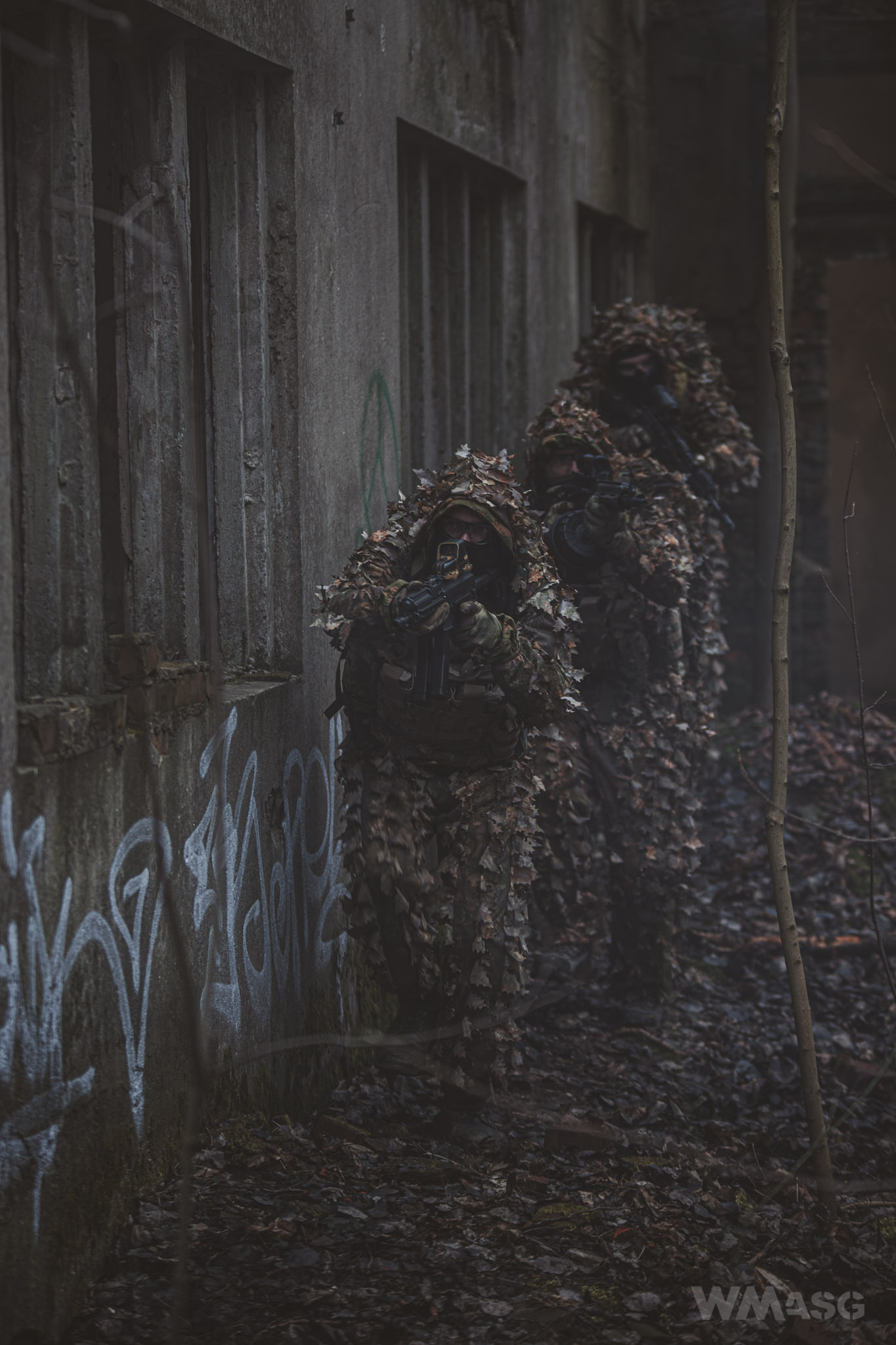
Target shooting test and muzzle velocity test
OpenBlaster 0.2 g BBs, ambient temperature of 21°C, HopUp set to zero.
Muzzle Velocity:
1. 405.2
2. 406.2
3. 405.8
4. 407.2
5. 406.5
6,404.9
7. 405.5
8. 406.8
9,404.9
10,404.2
Average 405.7 fps.
Spread: 3.0 fps.
Target shooting test
Hop-Up was adjusted, using G&G 0.25 g BBs, distance from the target was 25 m.
Single fire
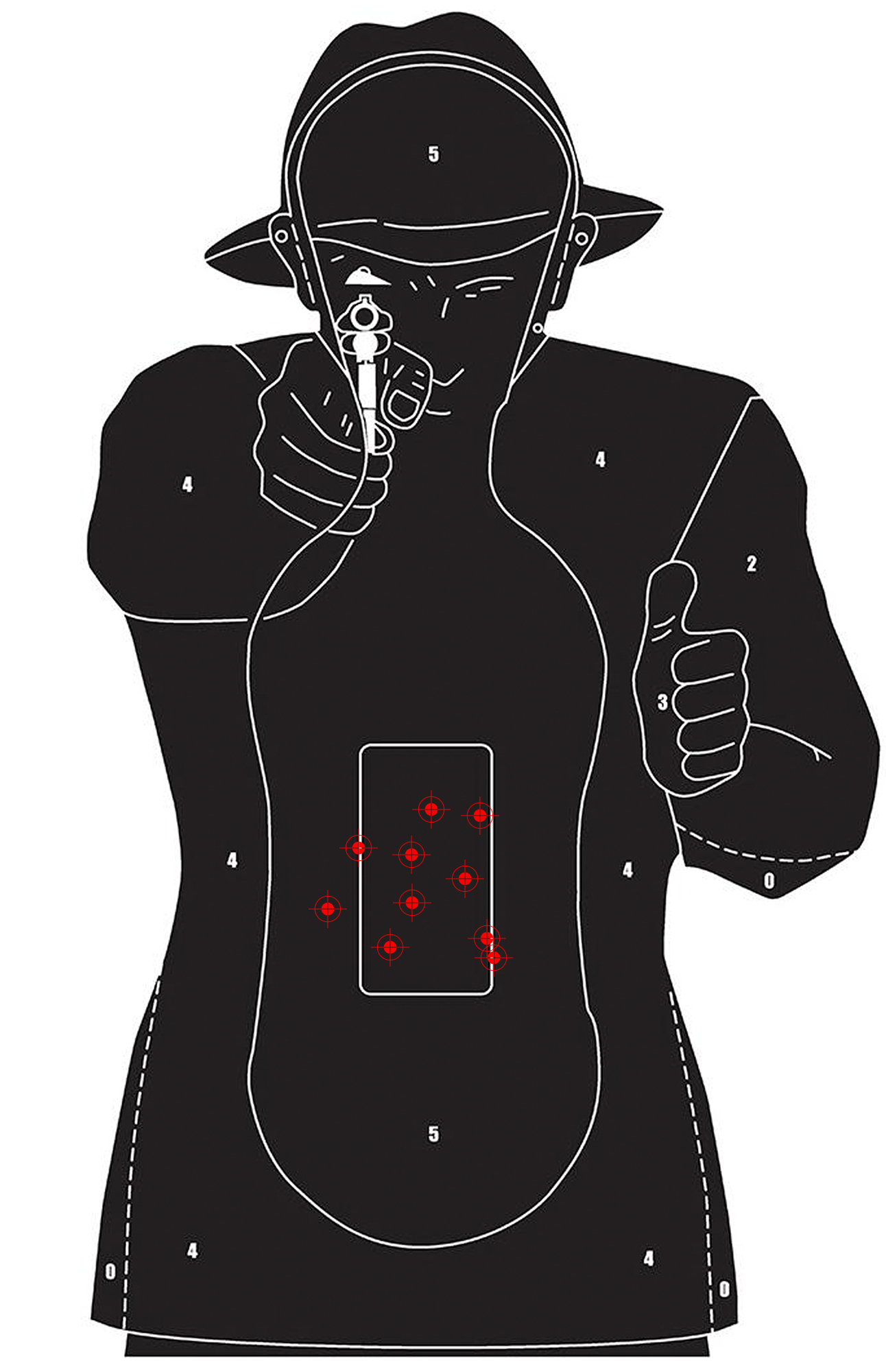
Full-auto
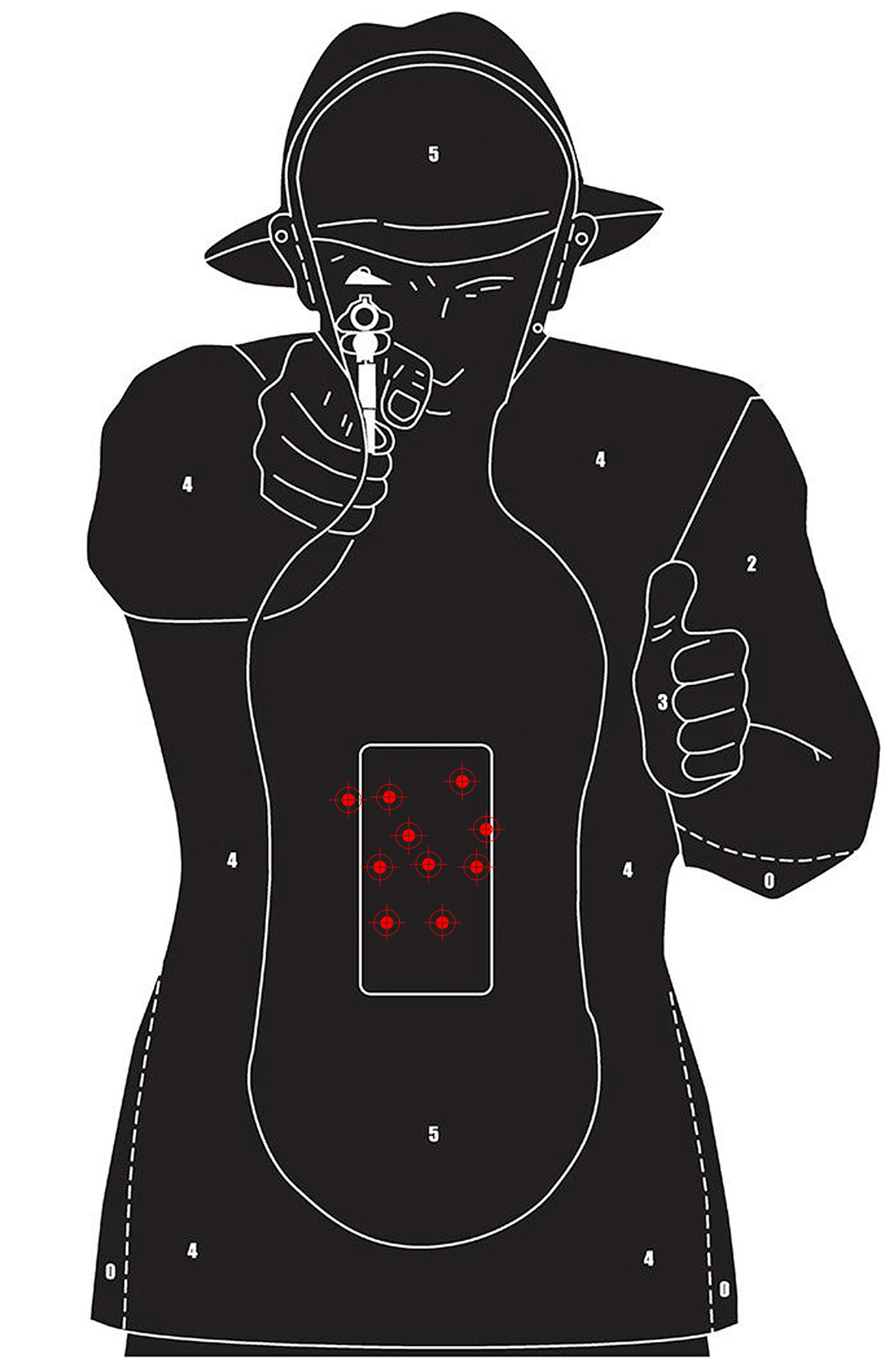
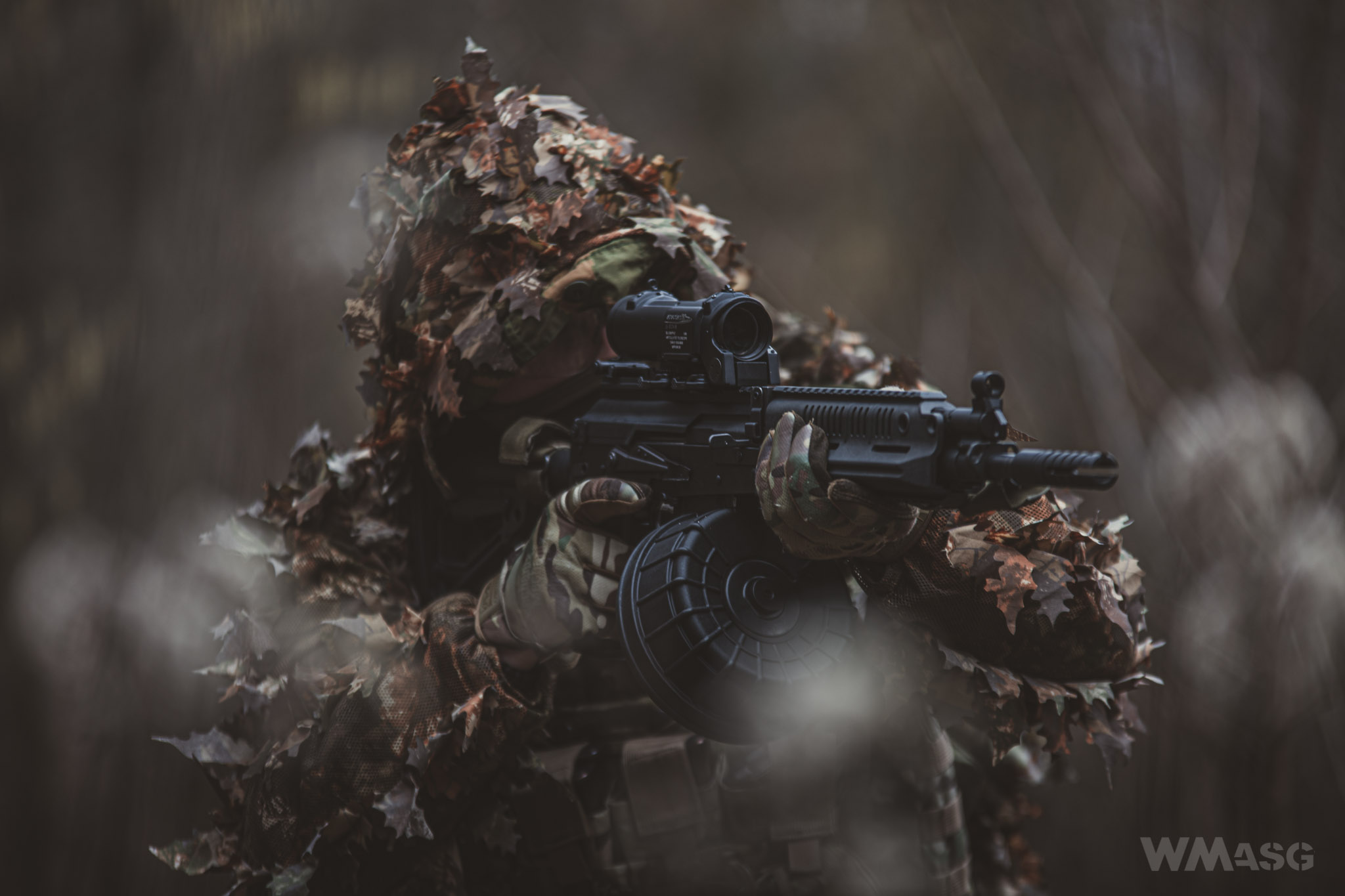
Finally, we decided to compare the RPK-16 with the similar AK-12 replica. The RPK is at the bottom.
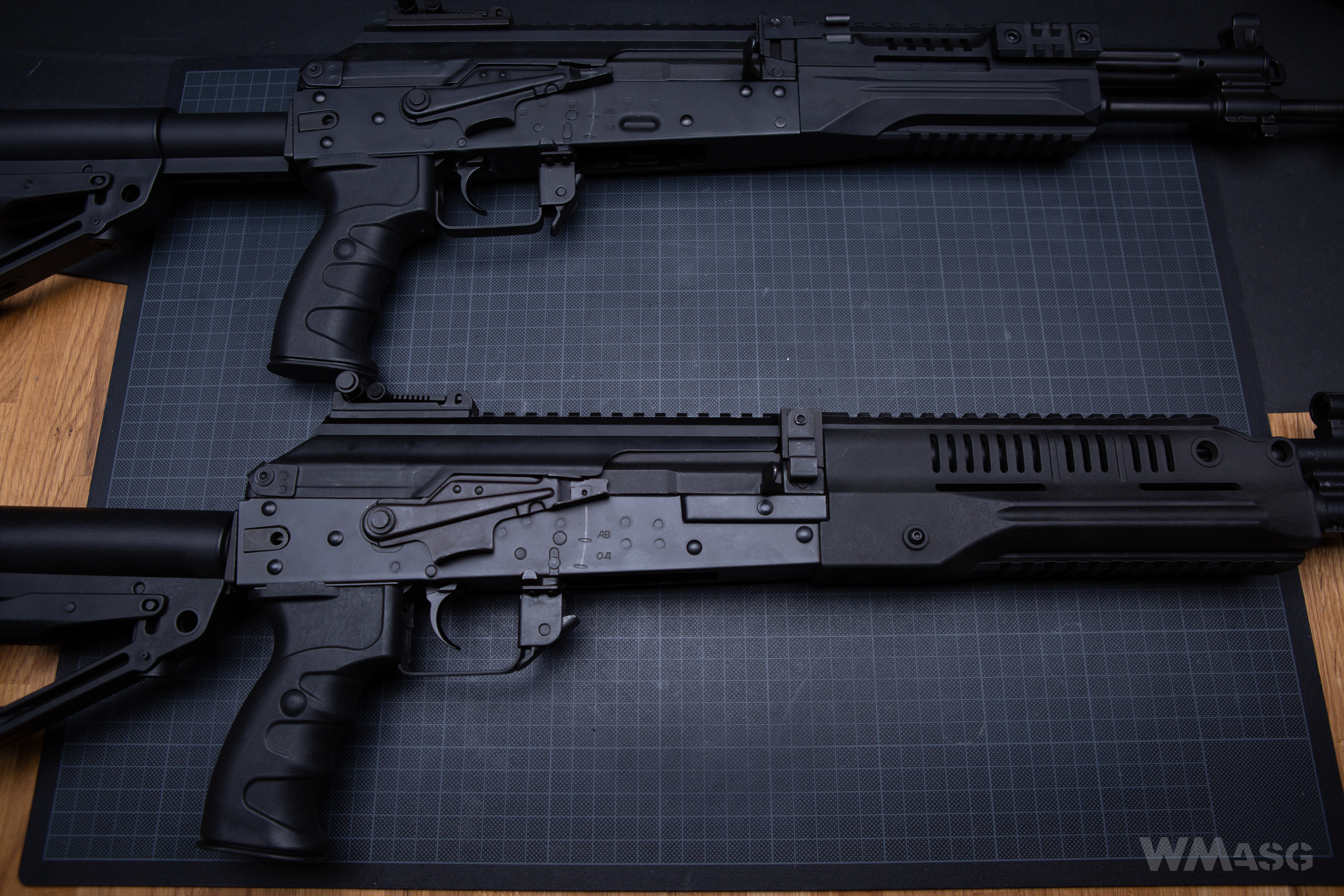
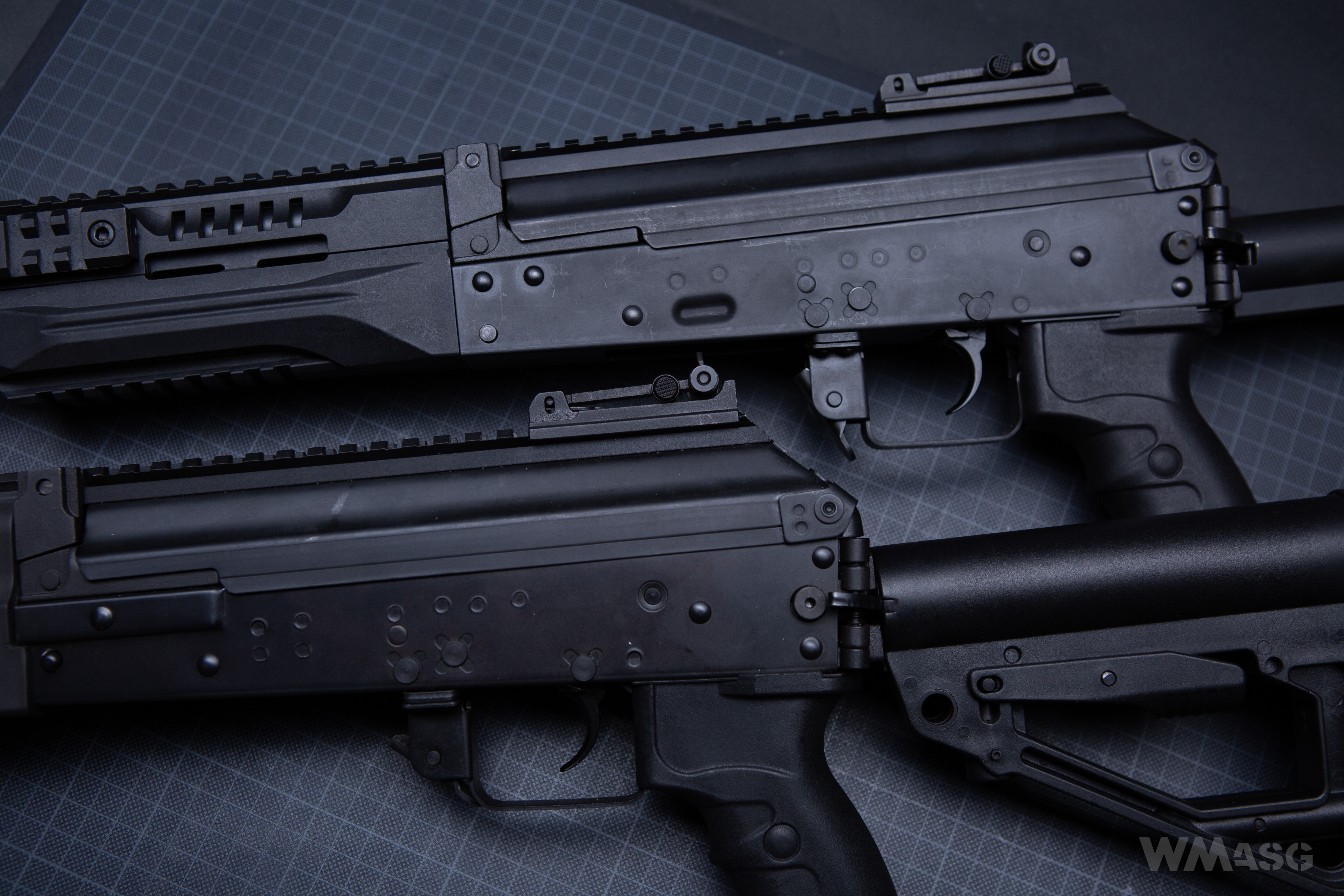
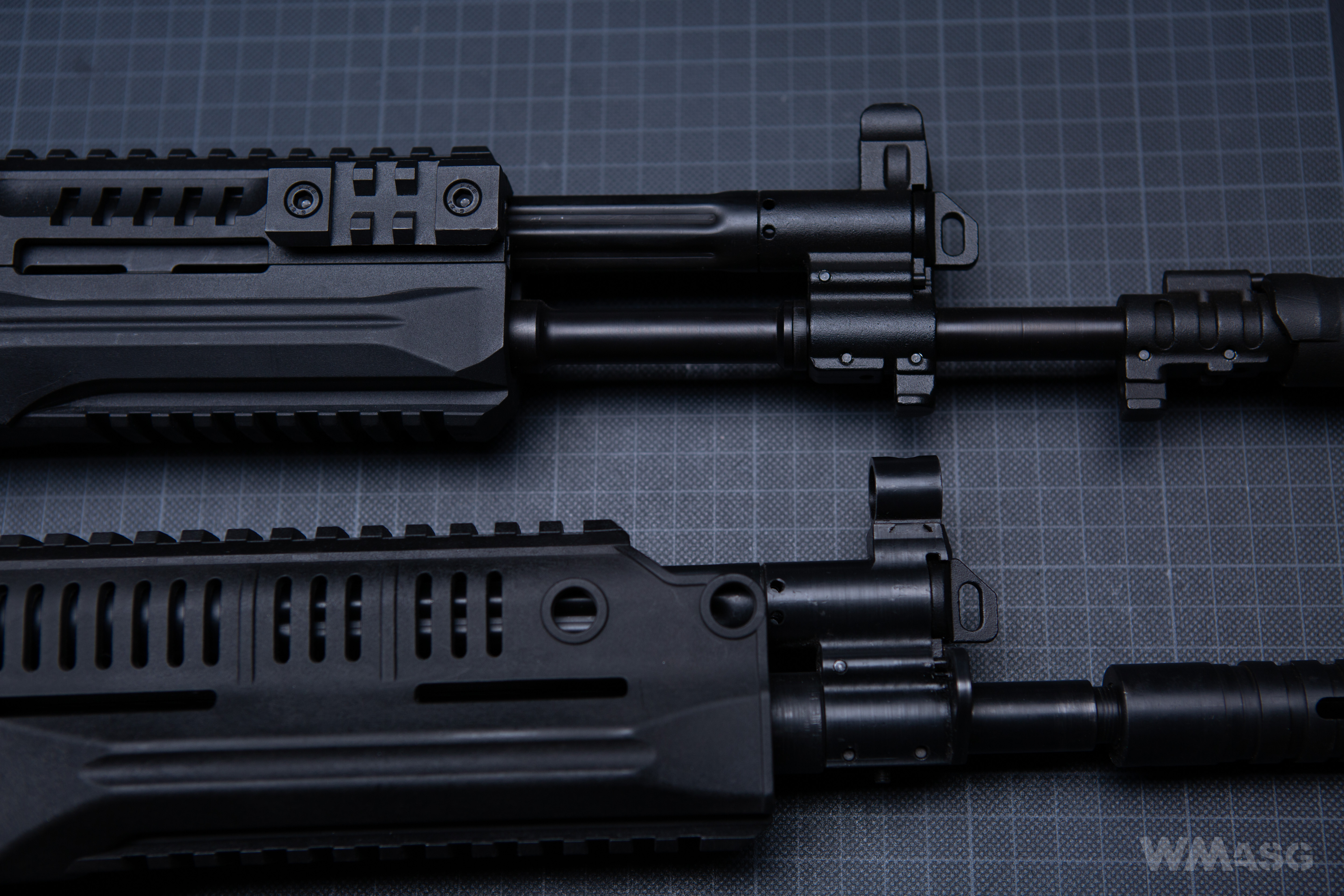
Summary
After editorial tests, the RPK-16 gives the impression of a successful replica. Visually and internally, the high quality of performance and reproduction is what LCT has already accustomed us to. The replica's undoubted advantage is the one resulting directly from the original concept. We get the first compact support rifle with a Russian pedigree. You can't say that about the ordinary RPK or RPK-74 replicas. This can be seen above when we compared the RPK-16 with the regular AK-12 assault rifle - the compact LMG is even slightly shorter.
In our opinion, RPK-16 users will enjoy it. But to make it a "power house" you need to think about the power supply issue. Dedicated stick batteries are not the best solution.

On the next page technical details for those interested.

